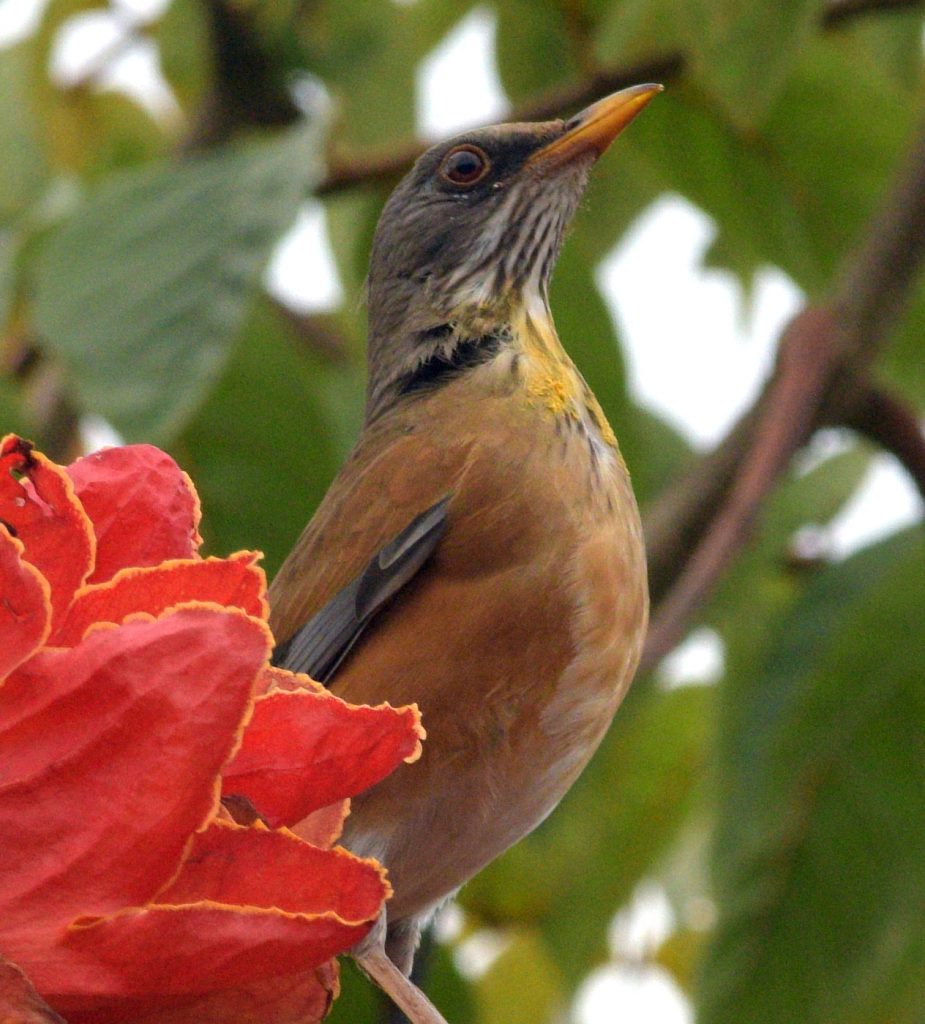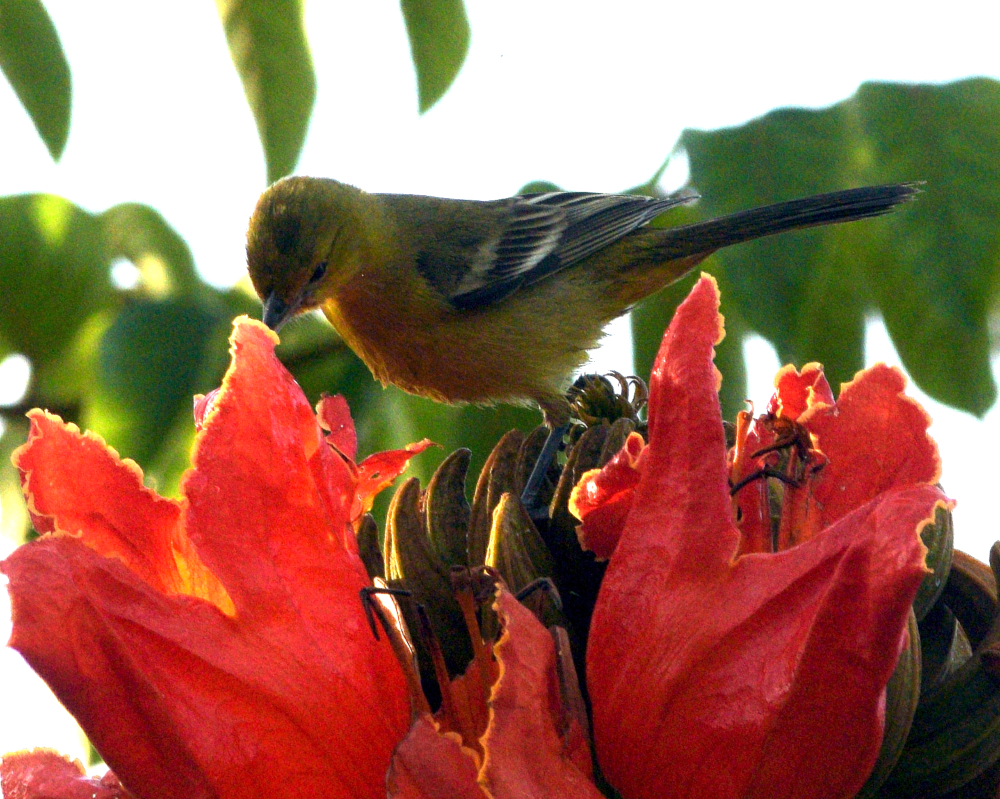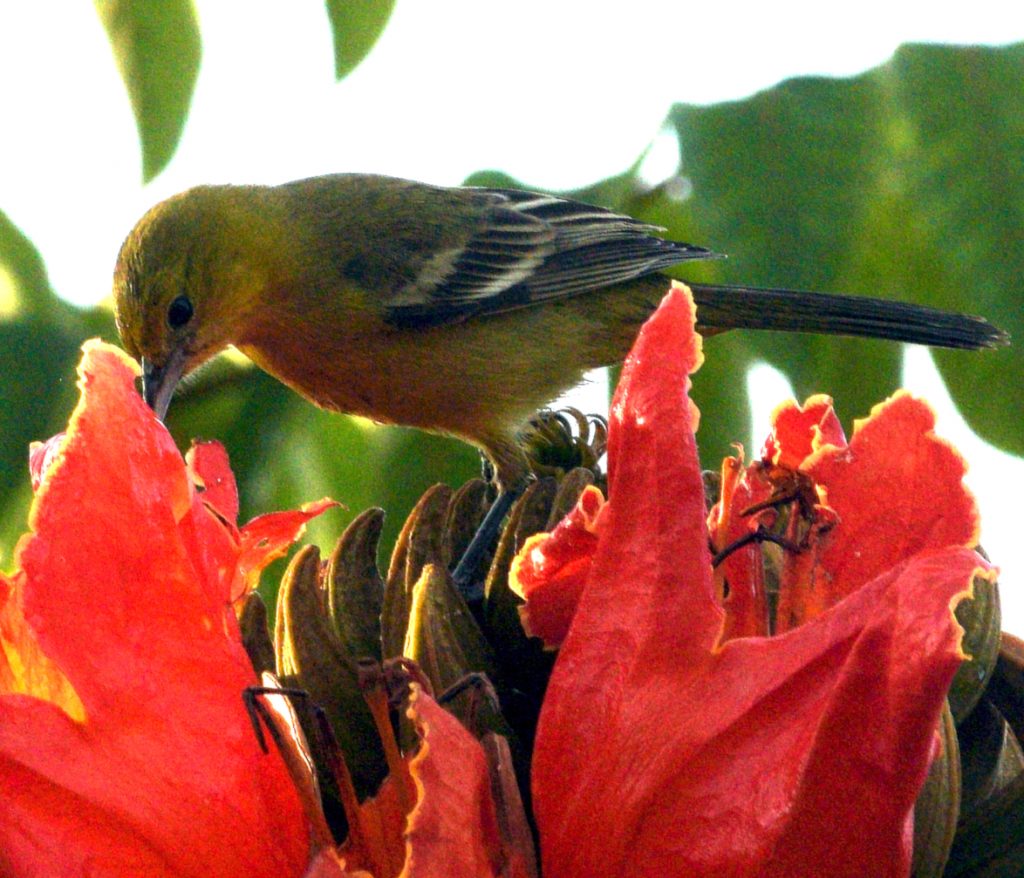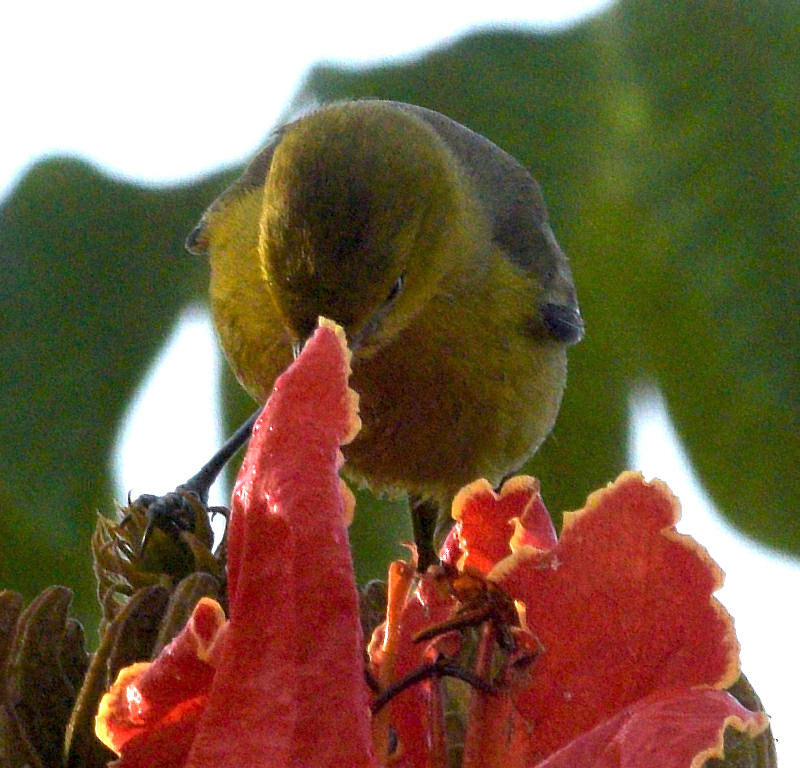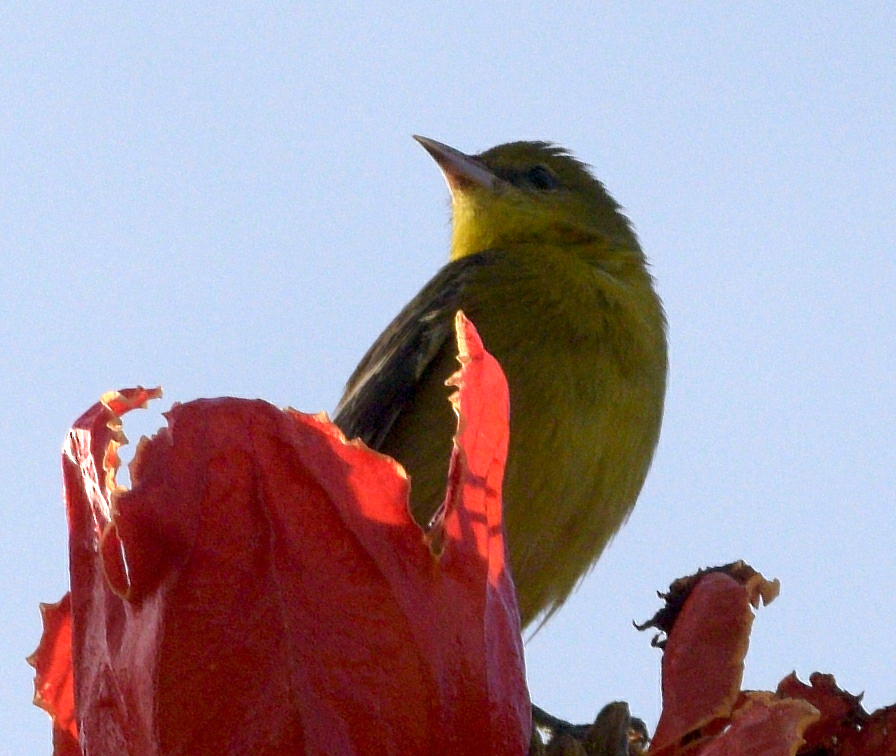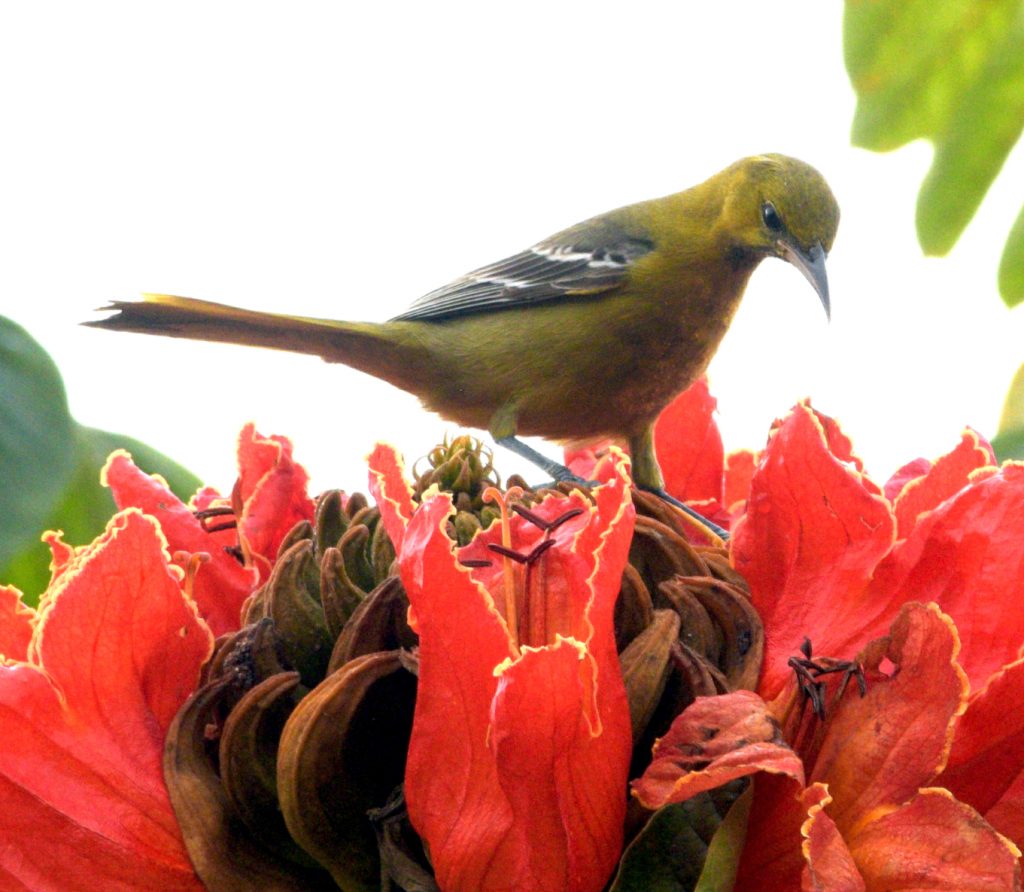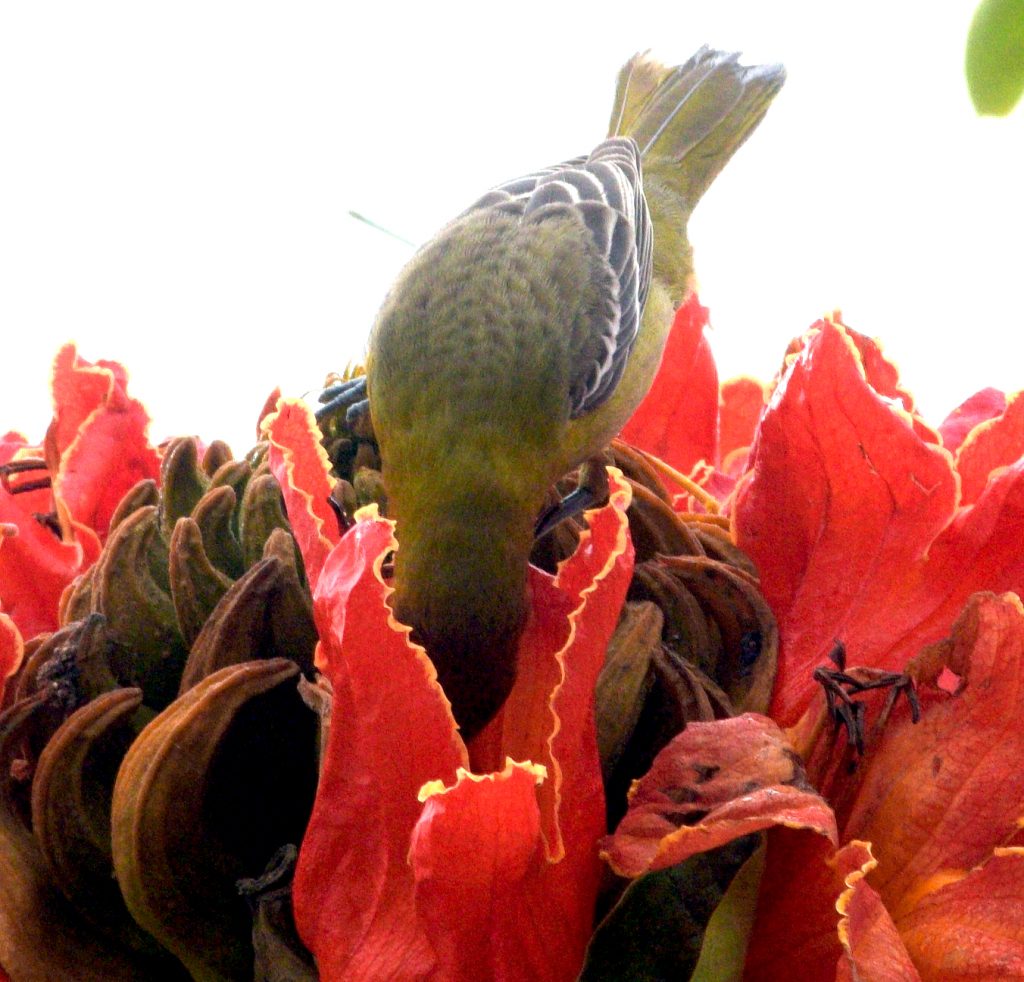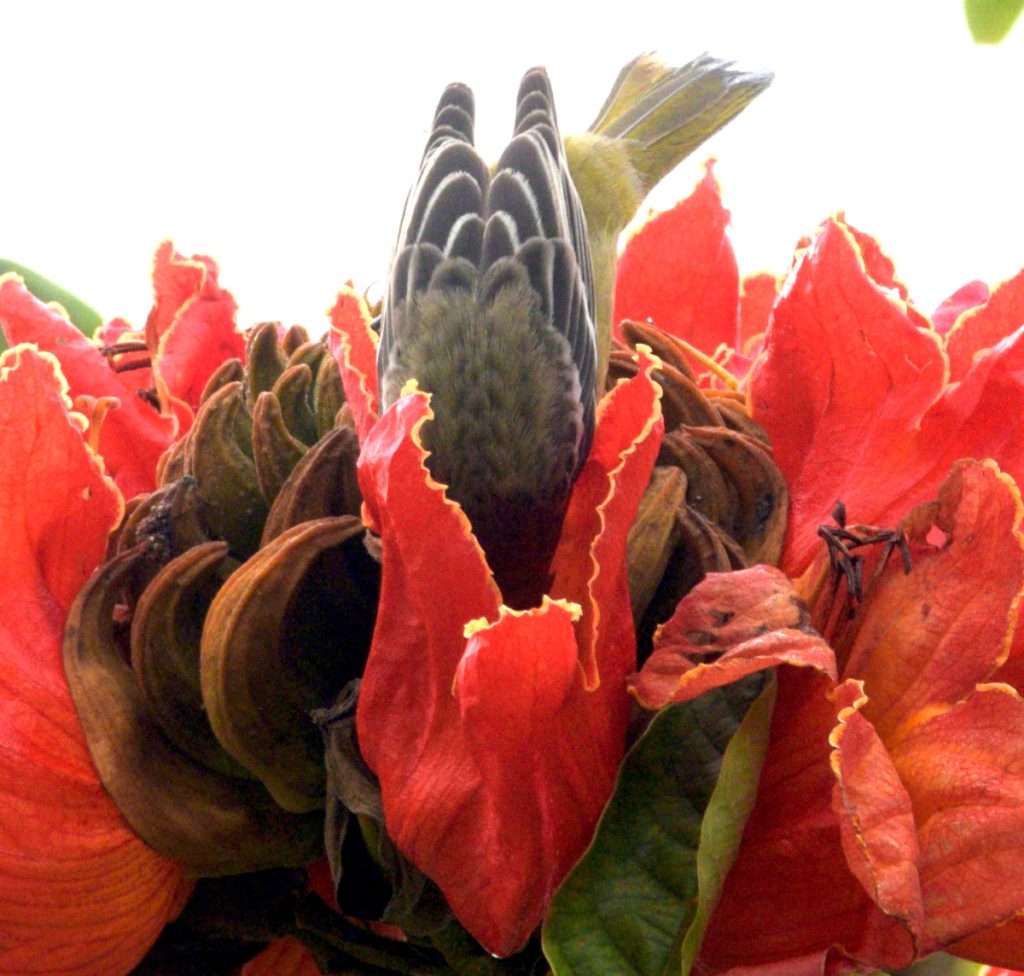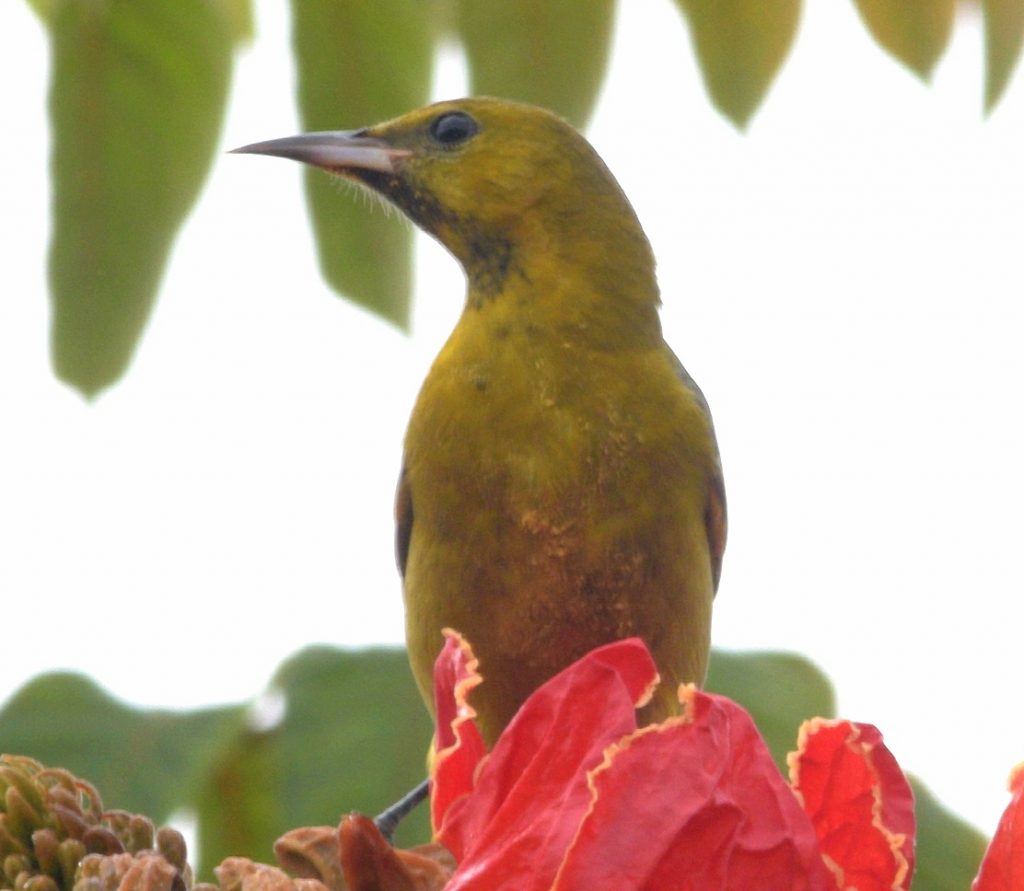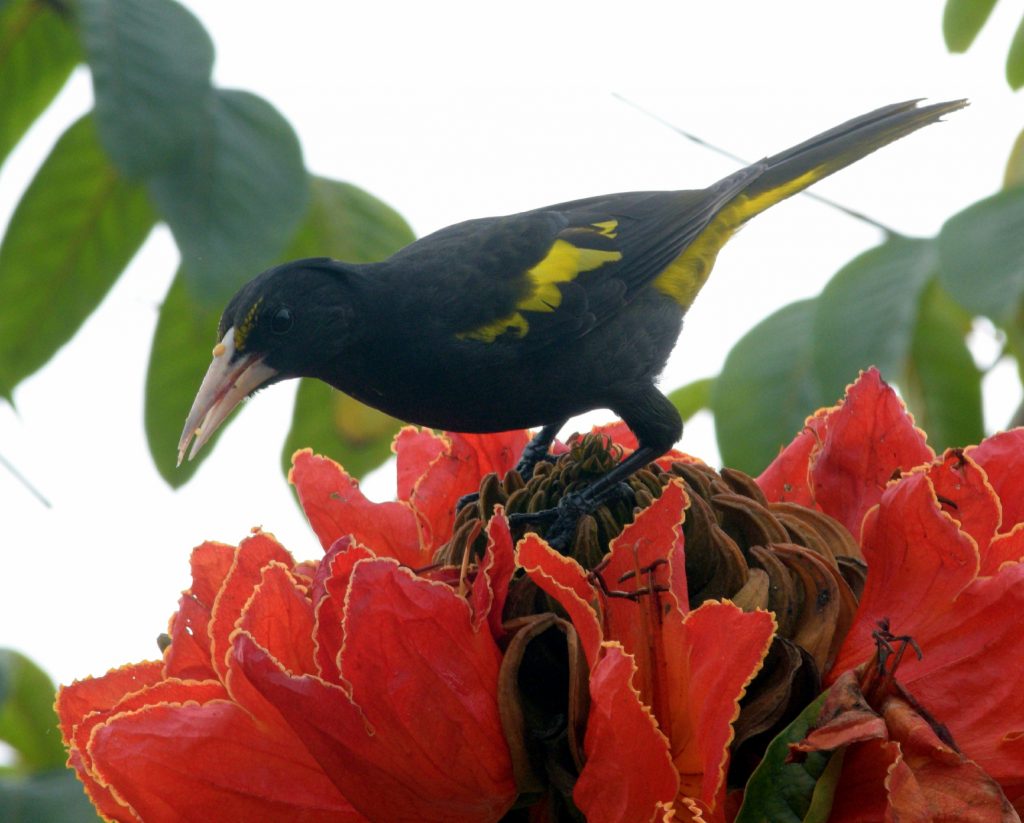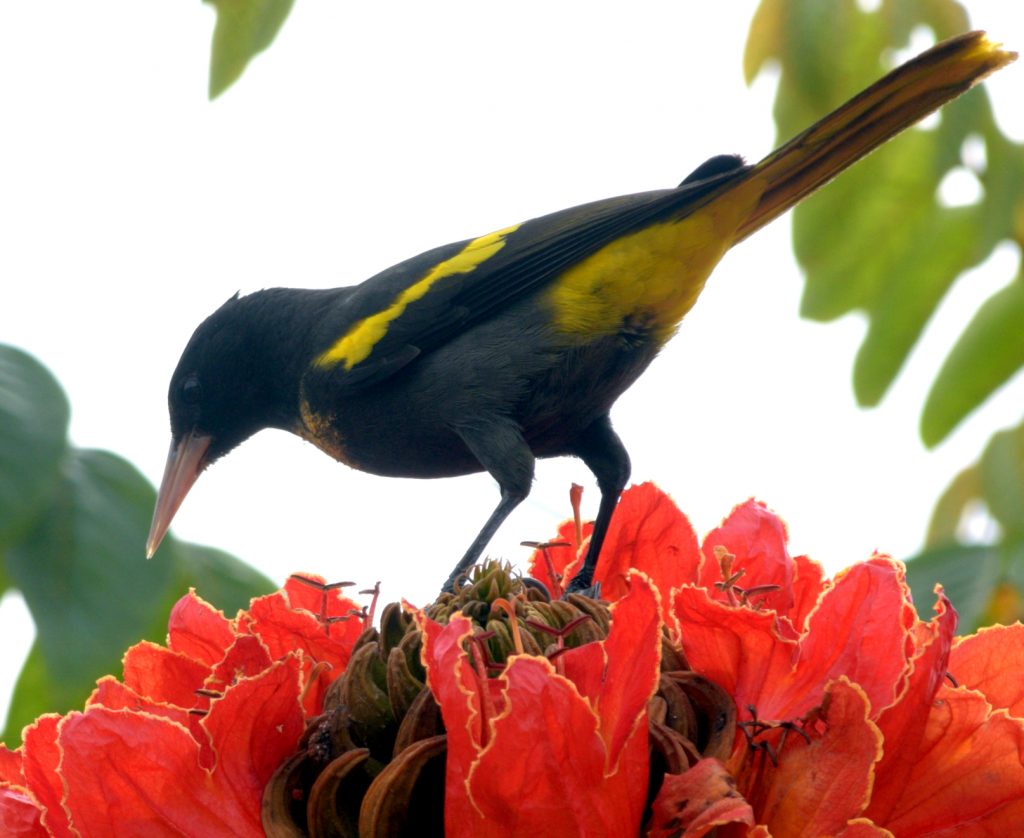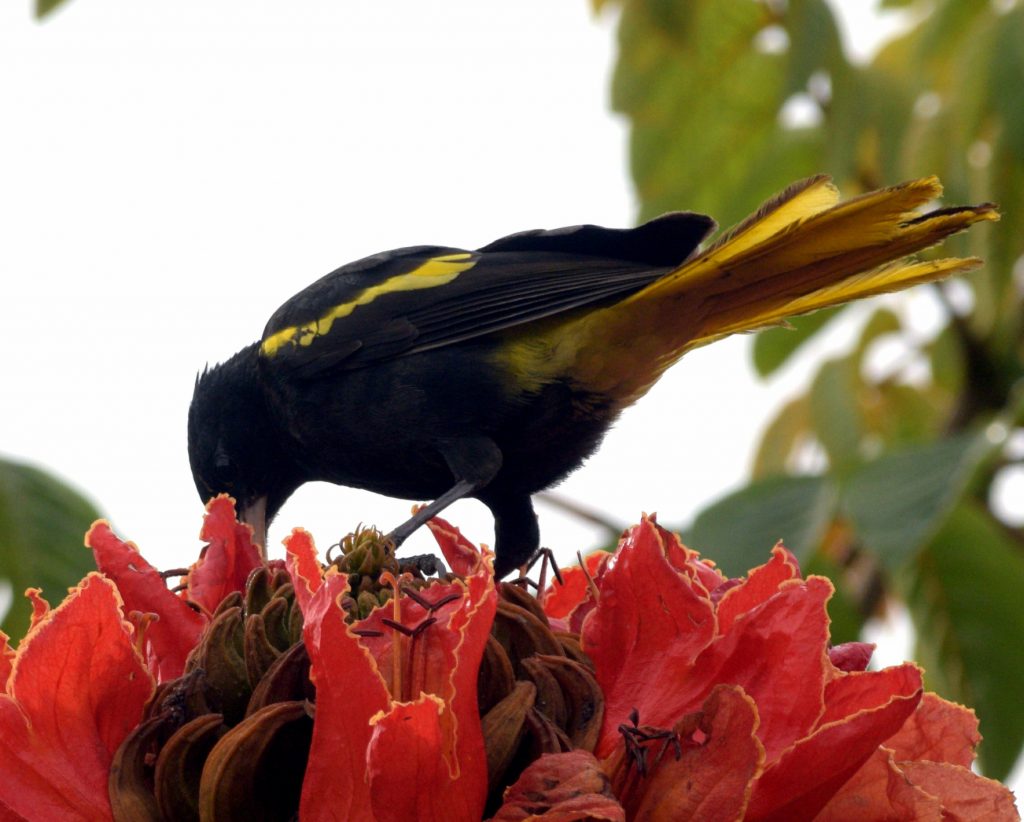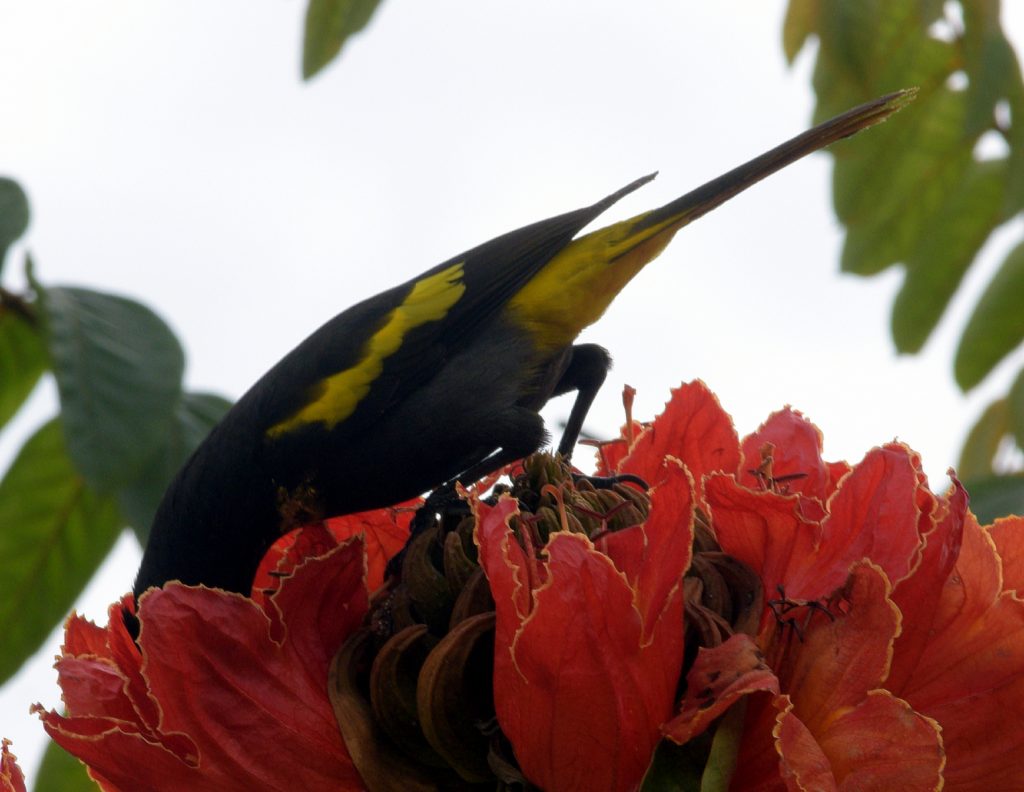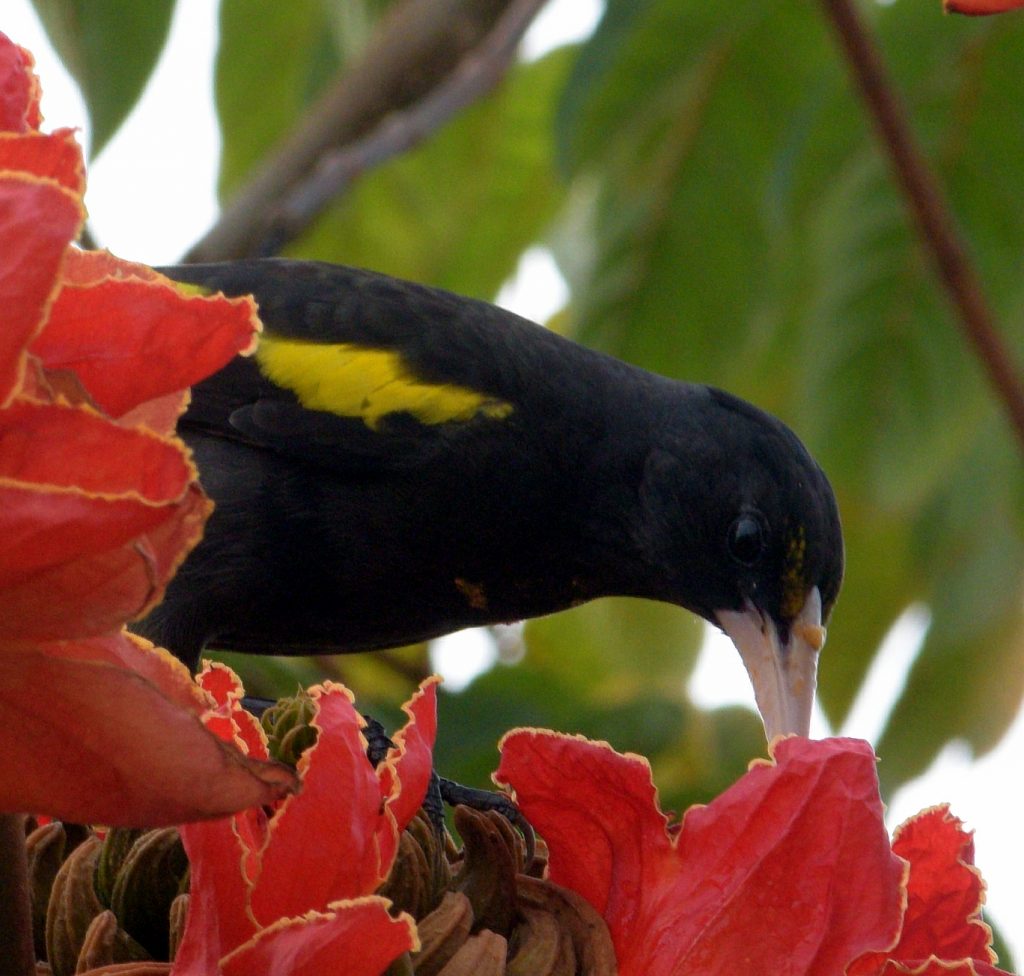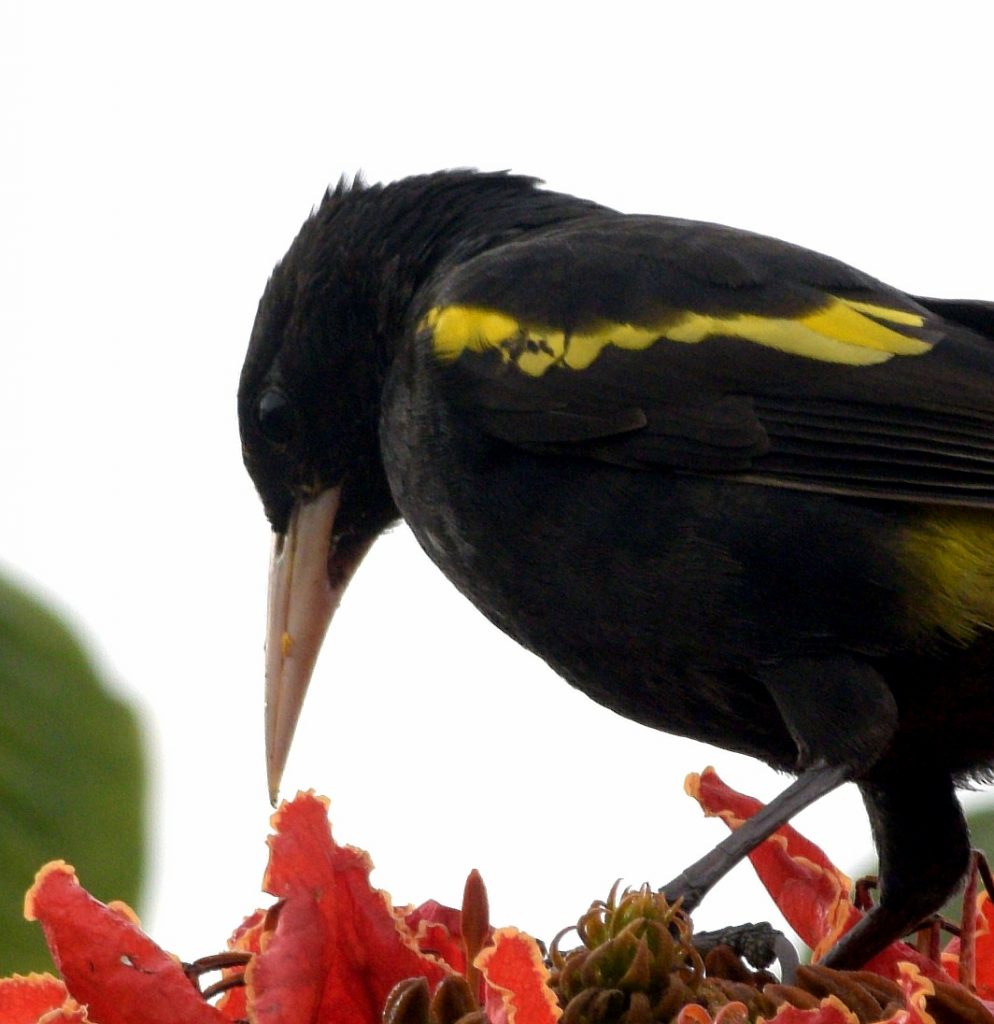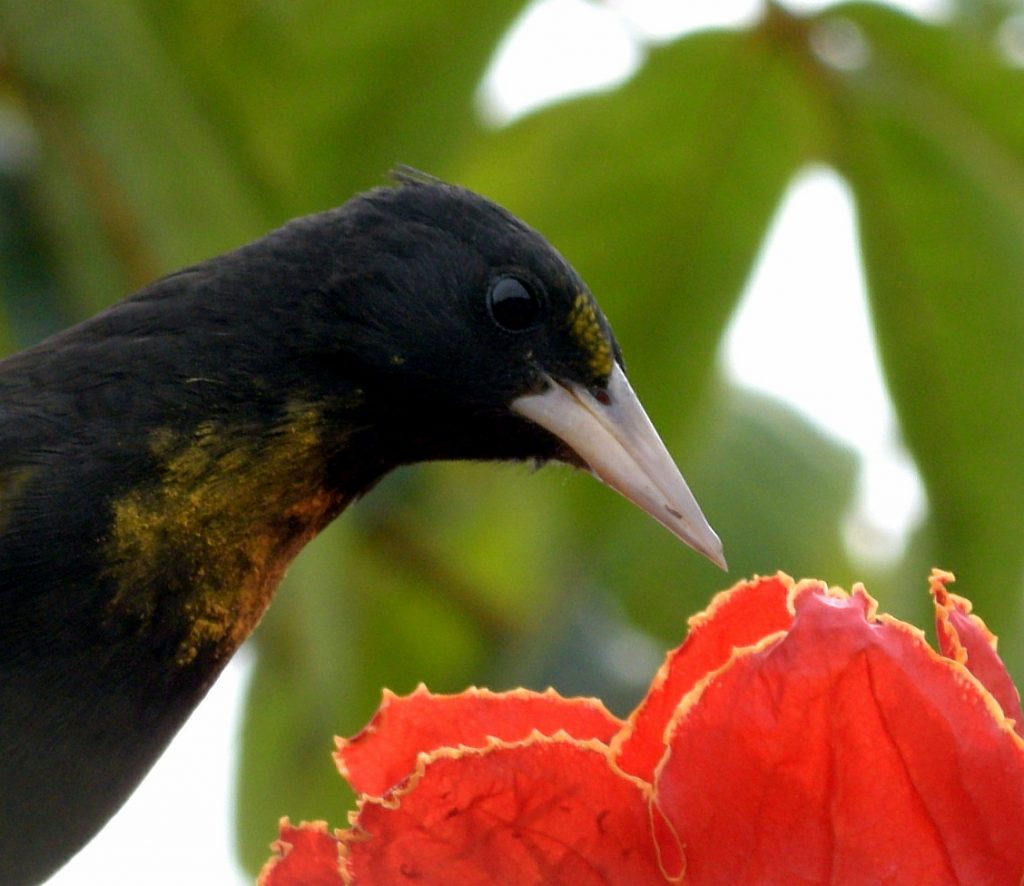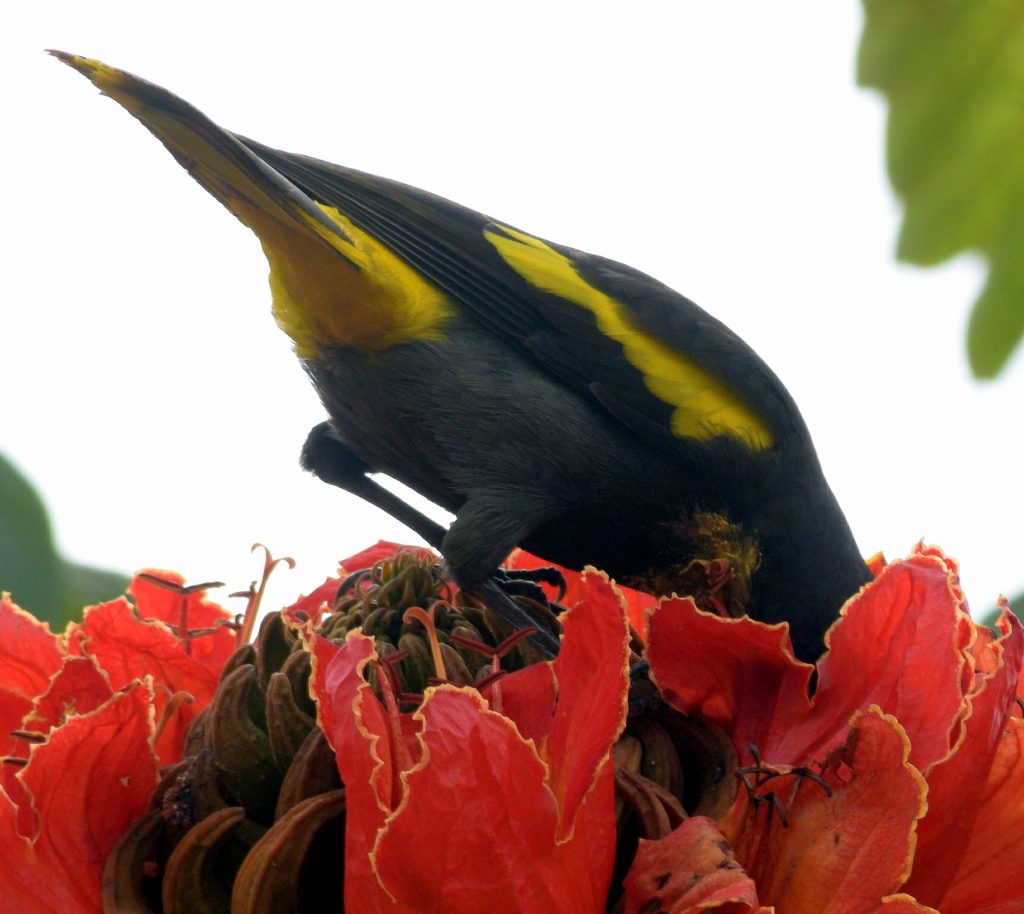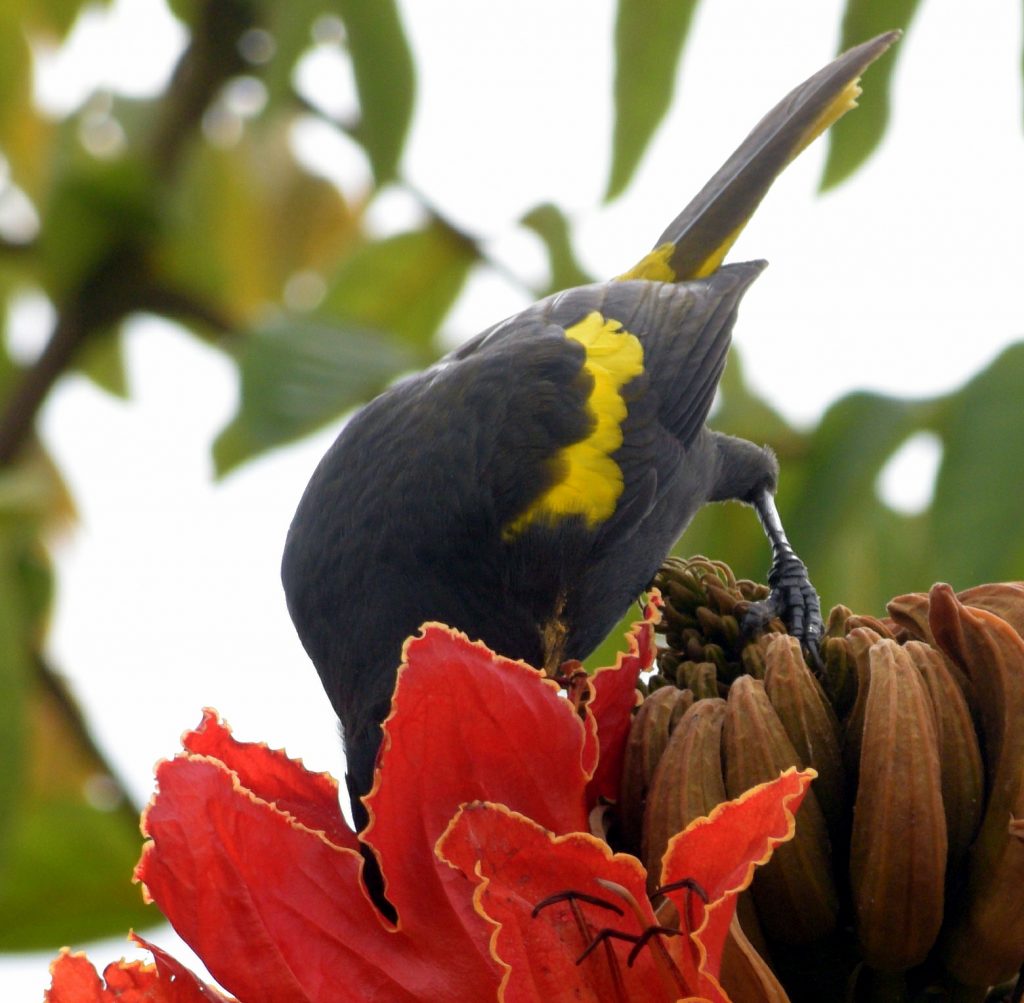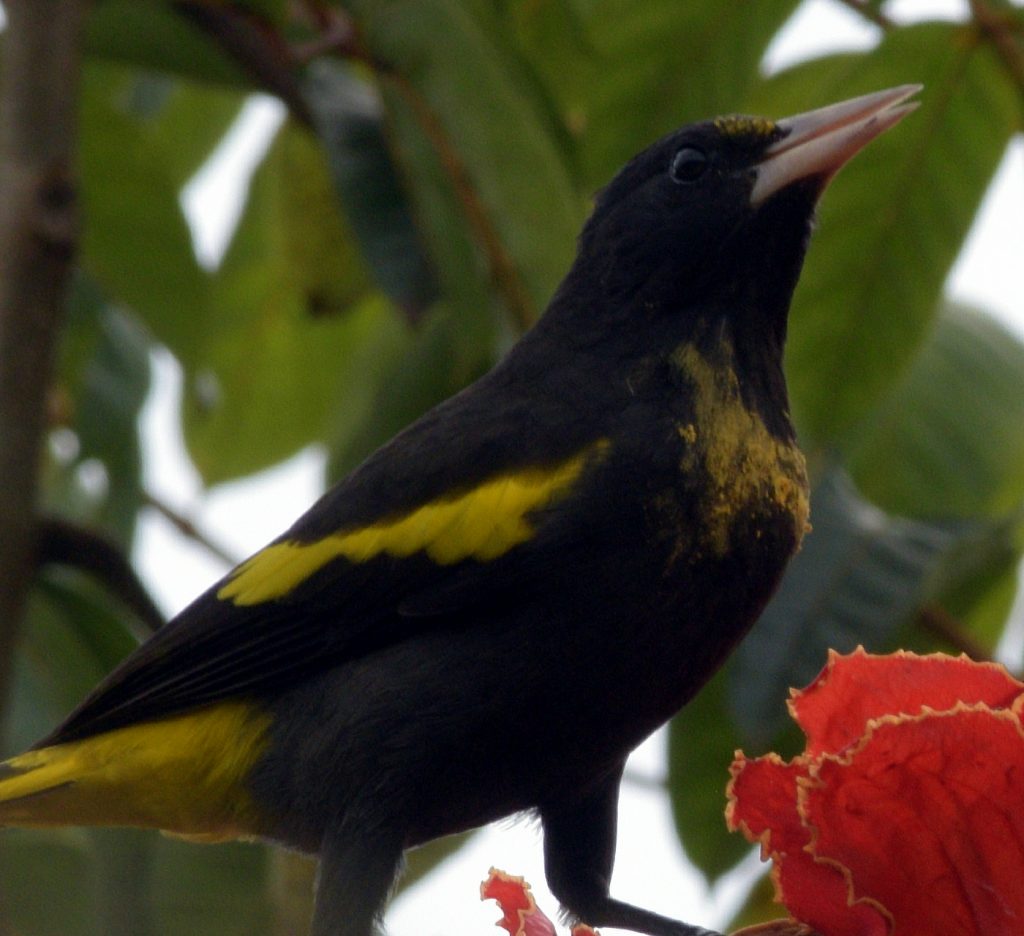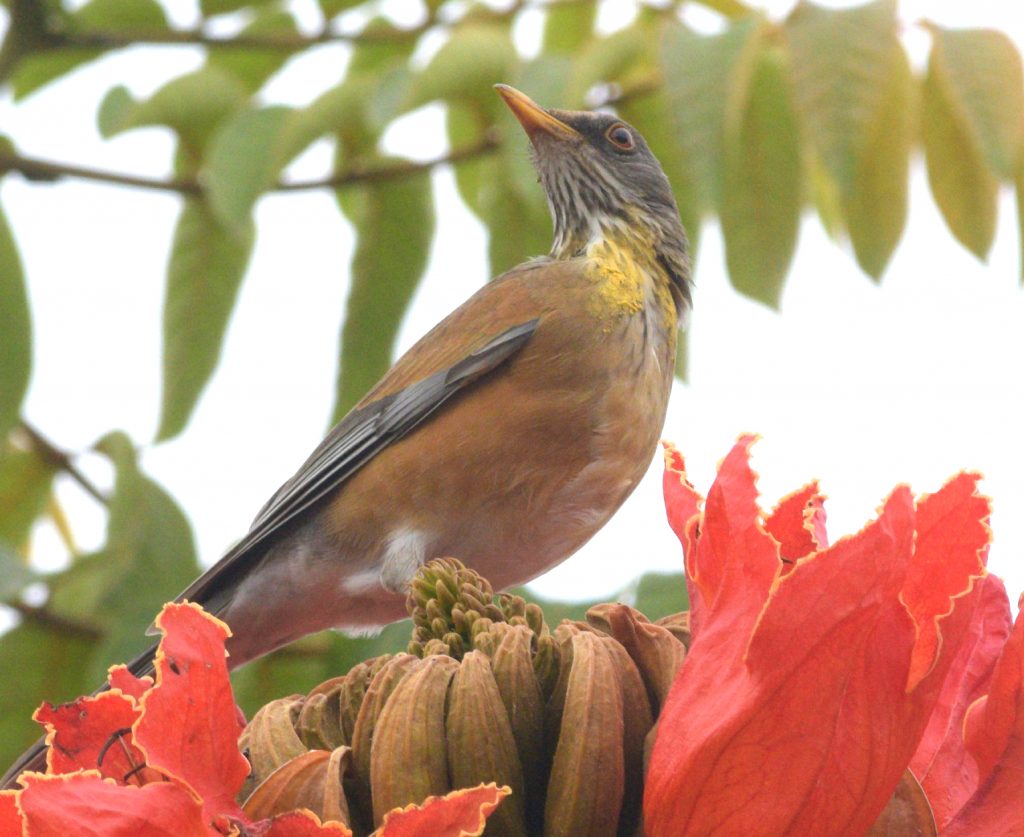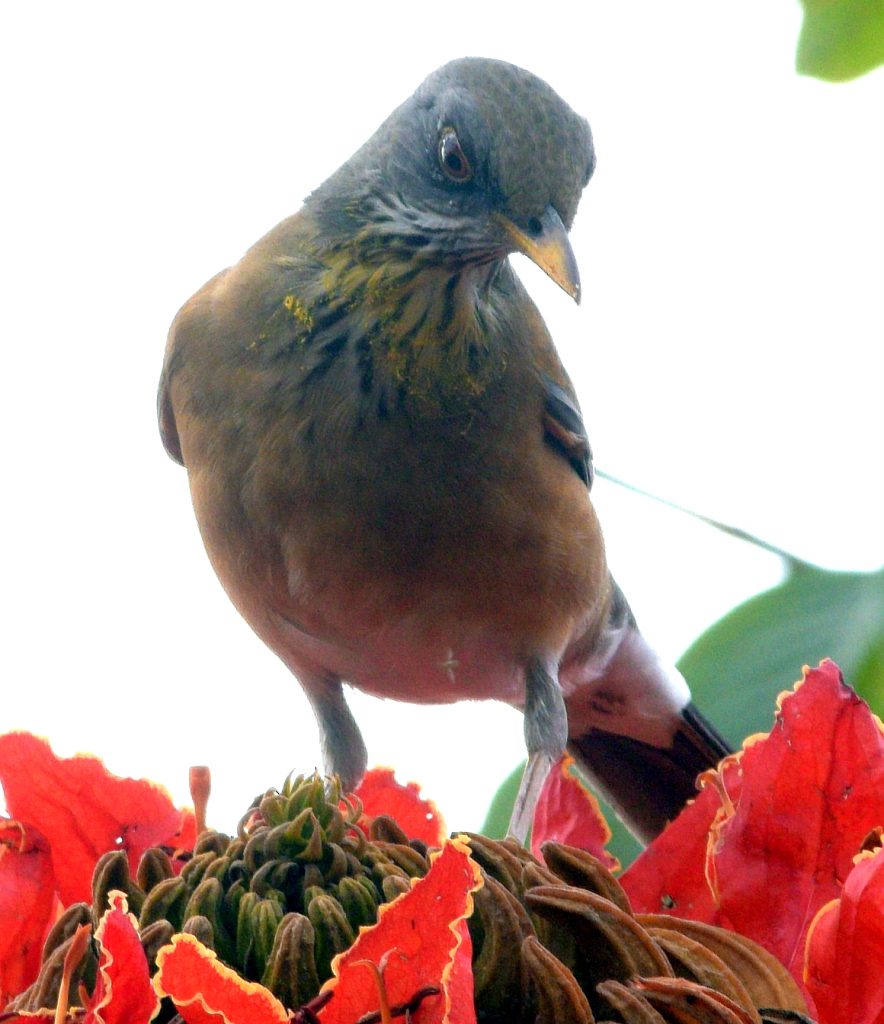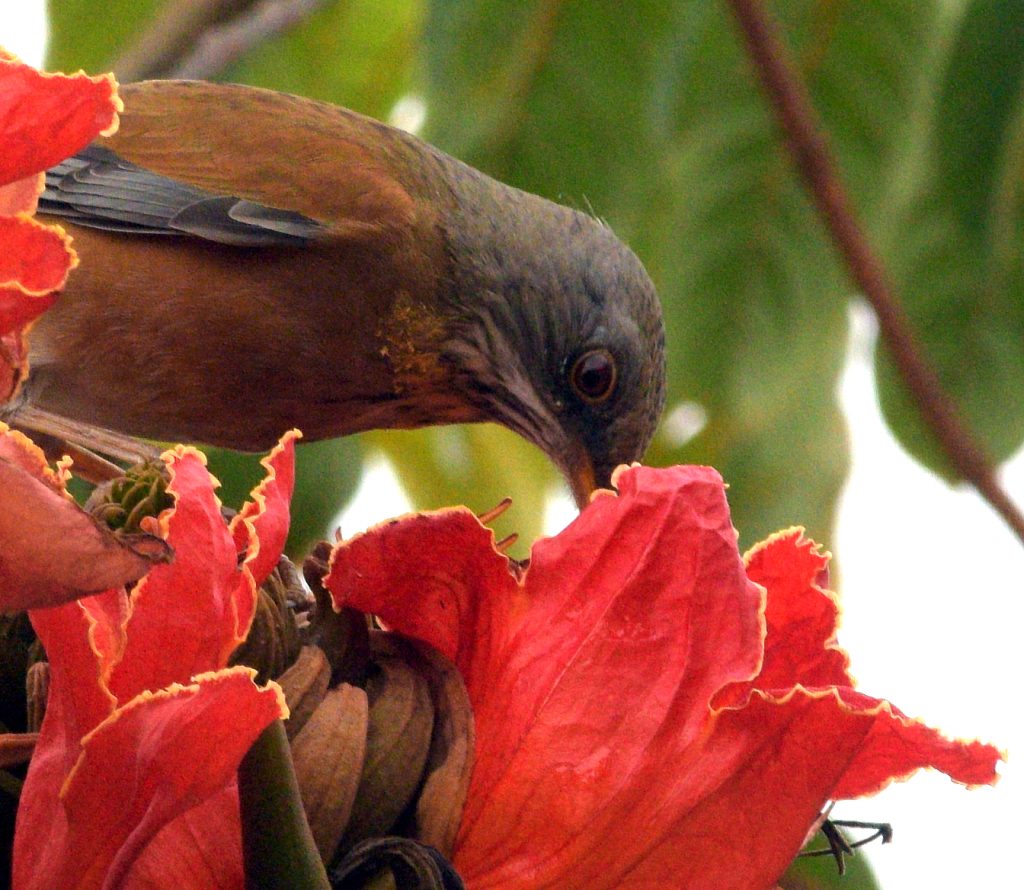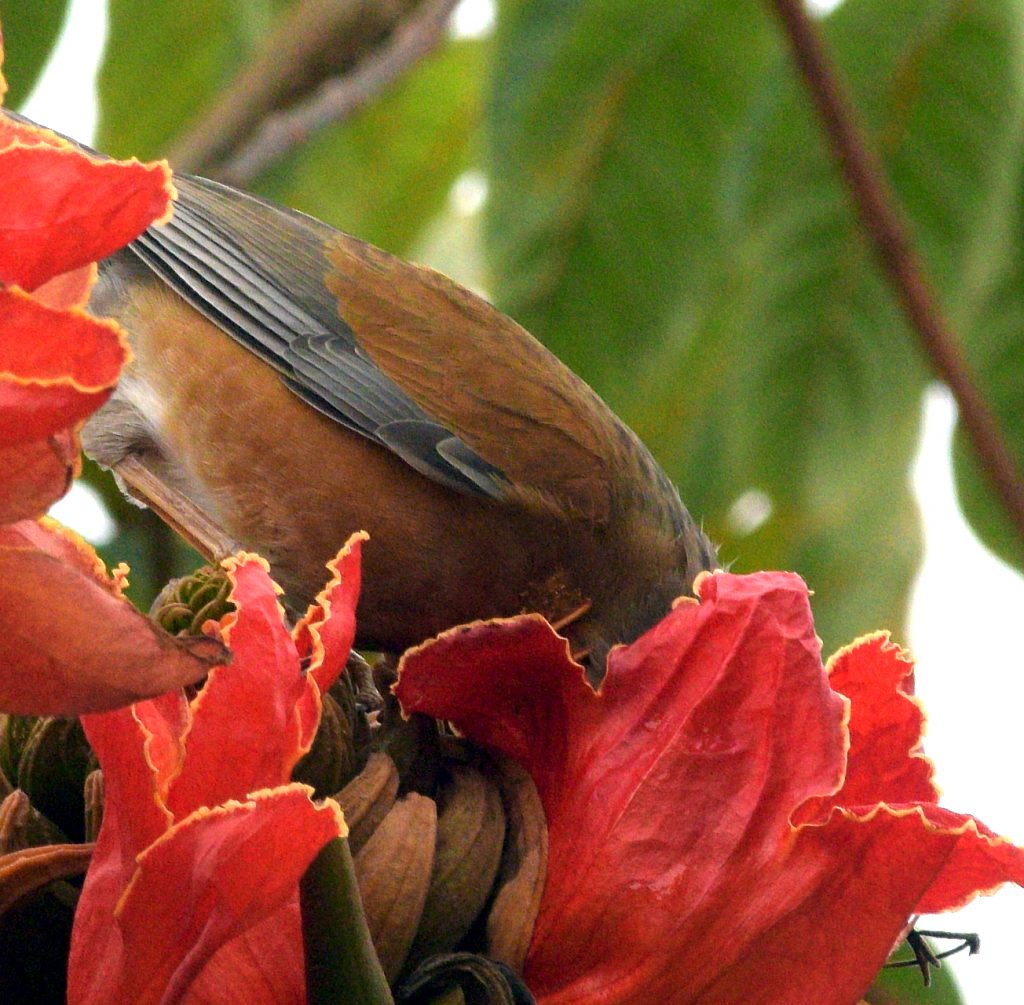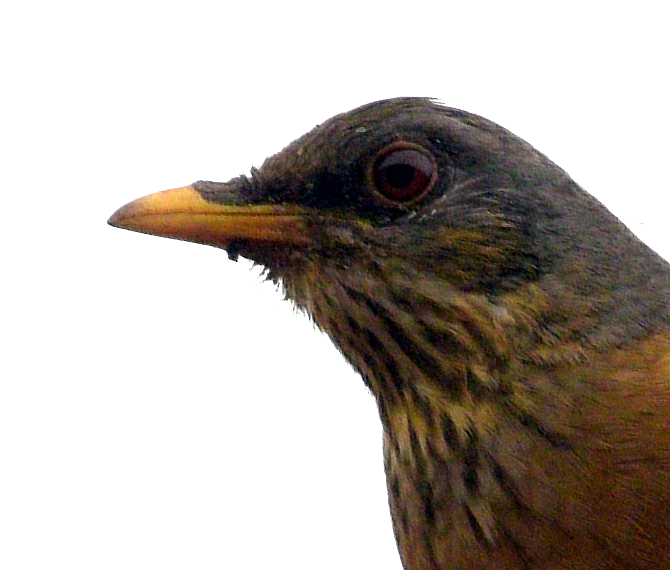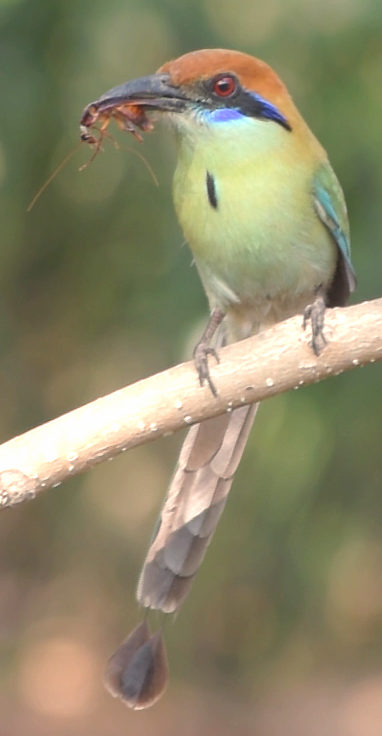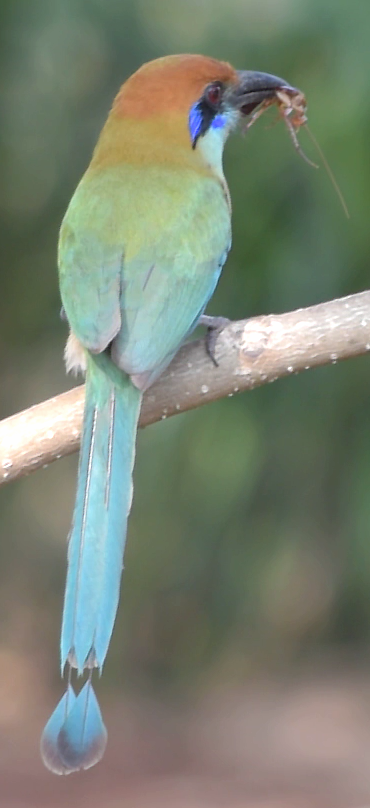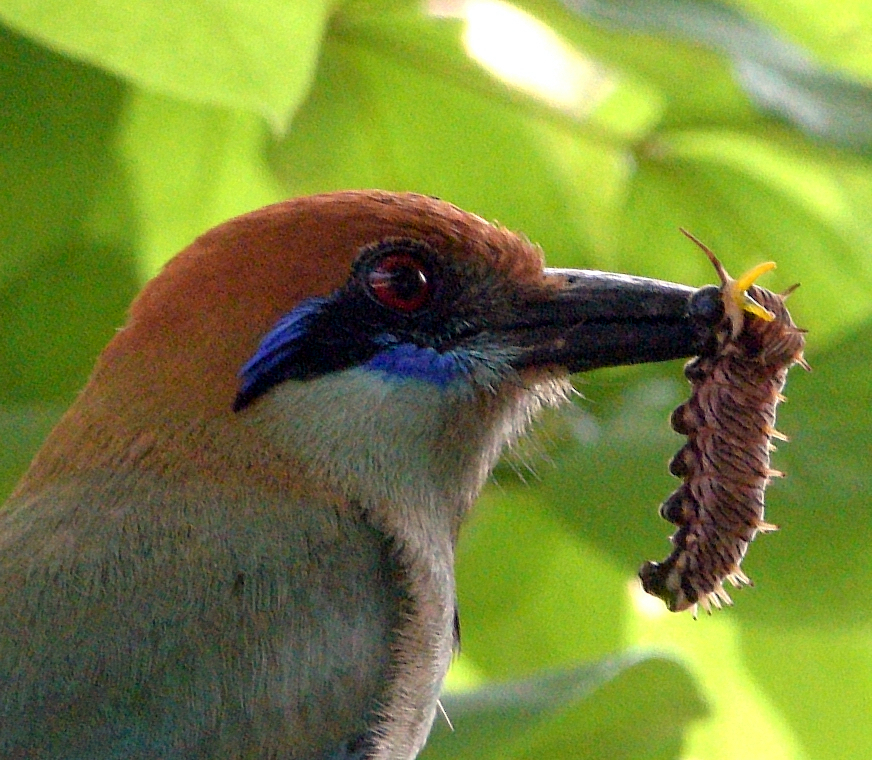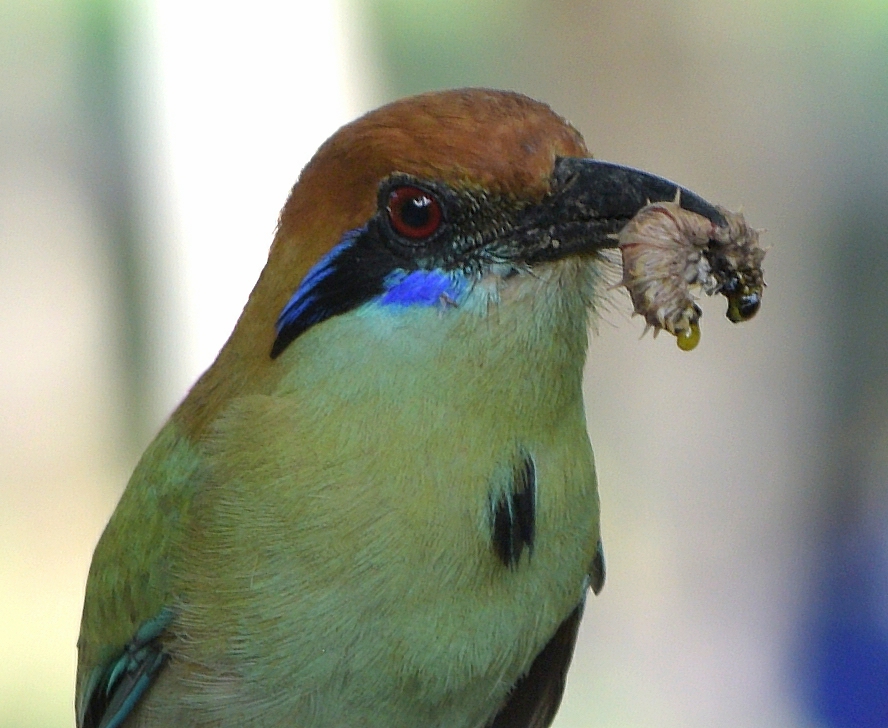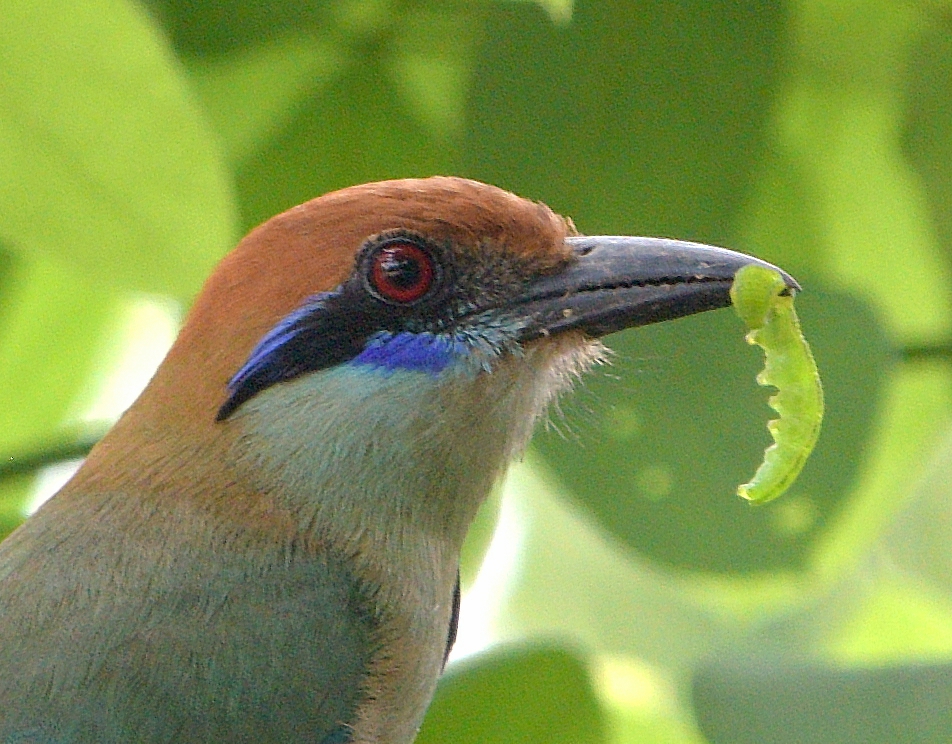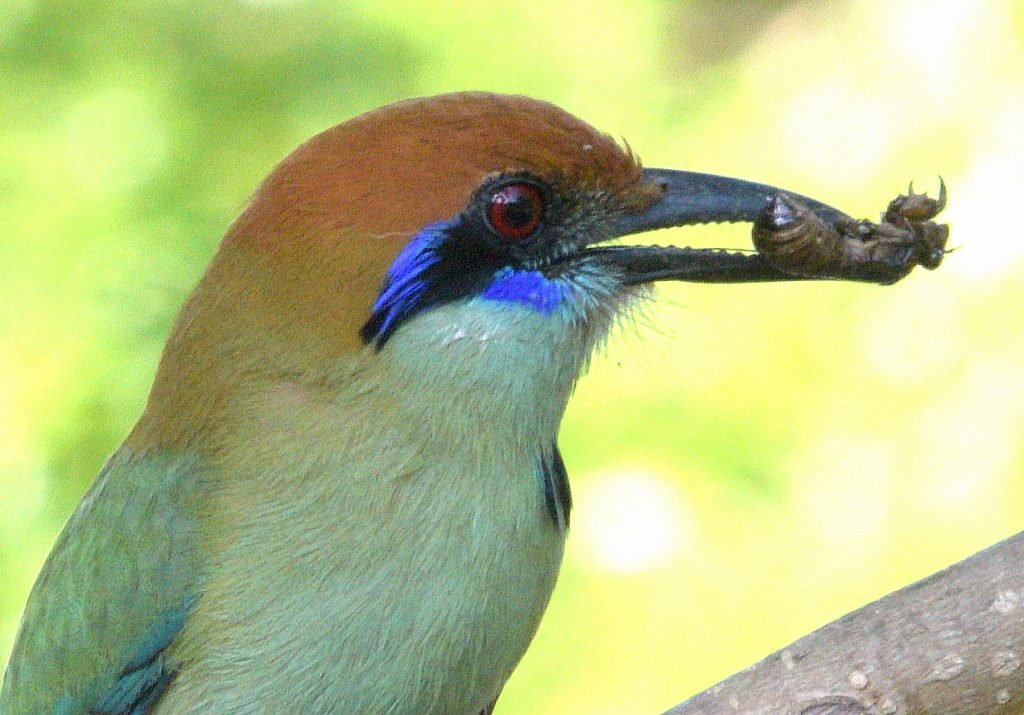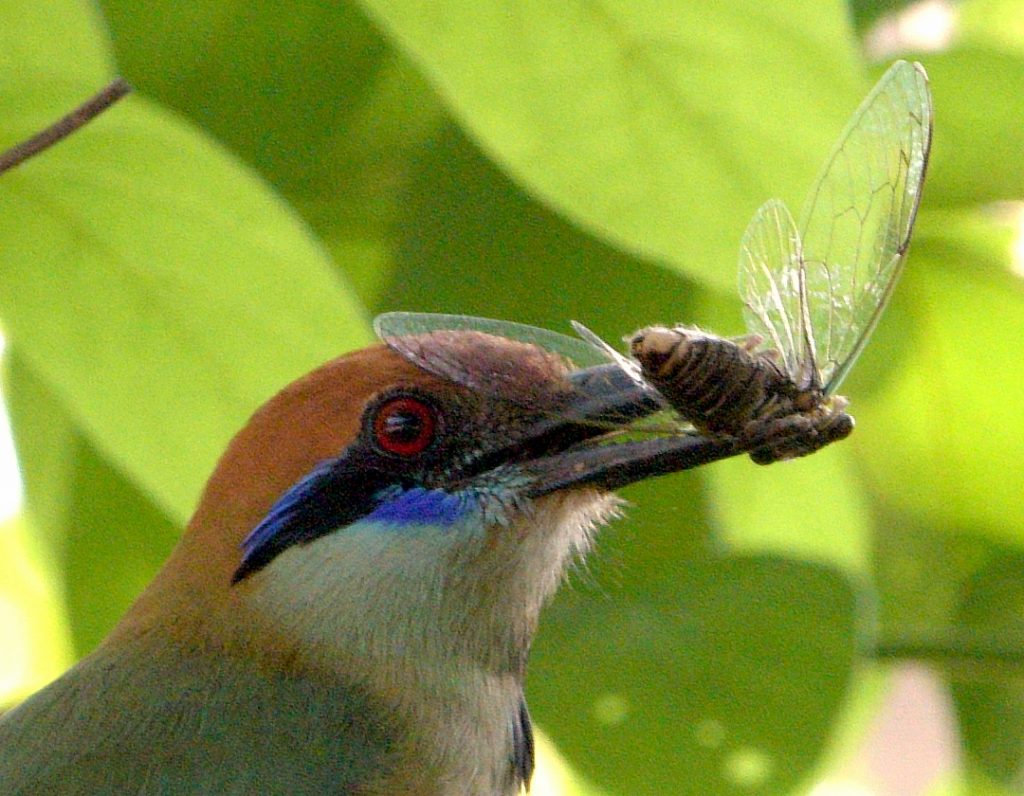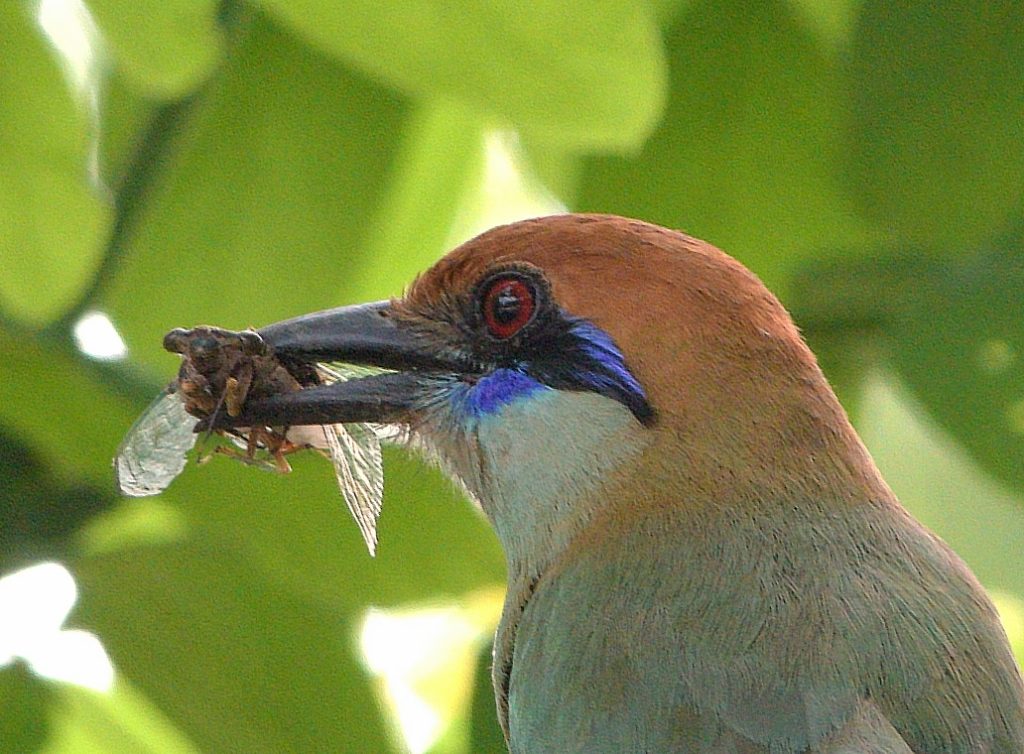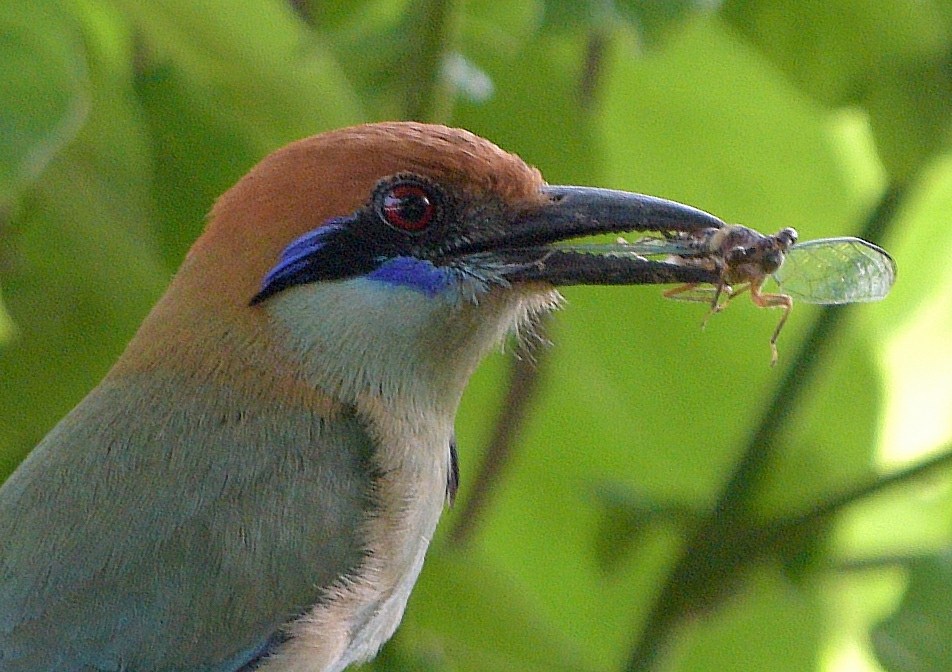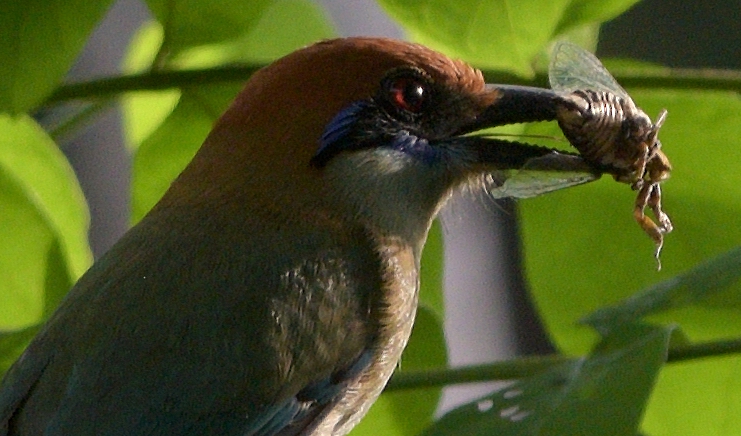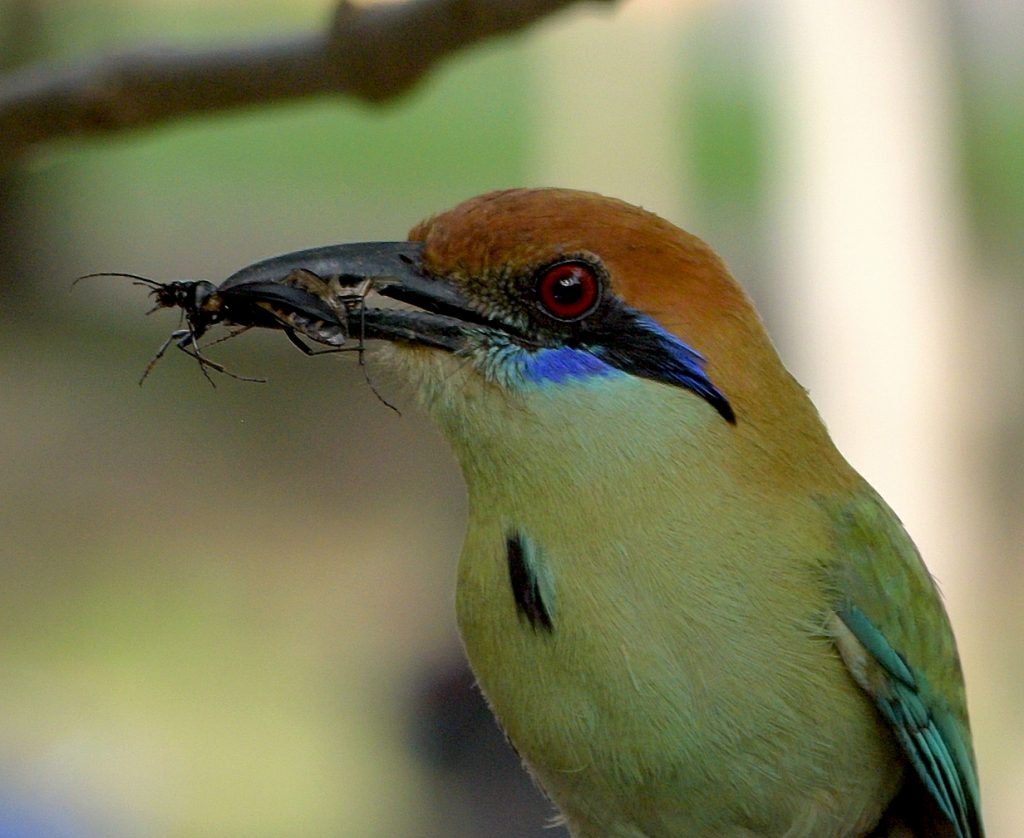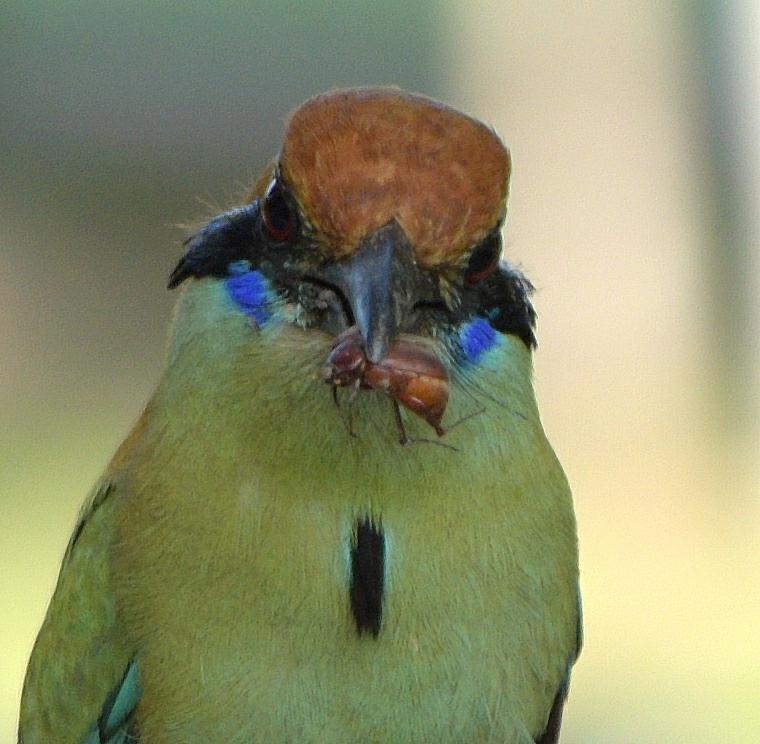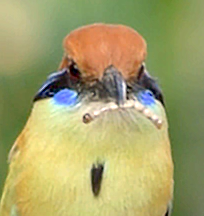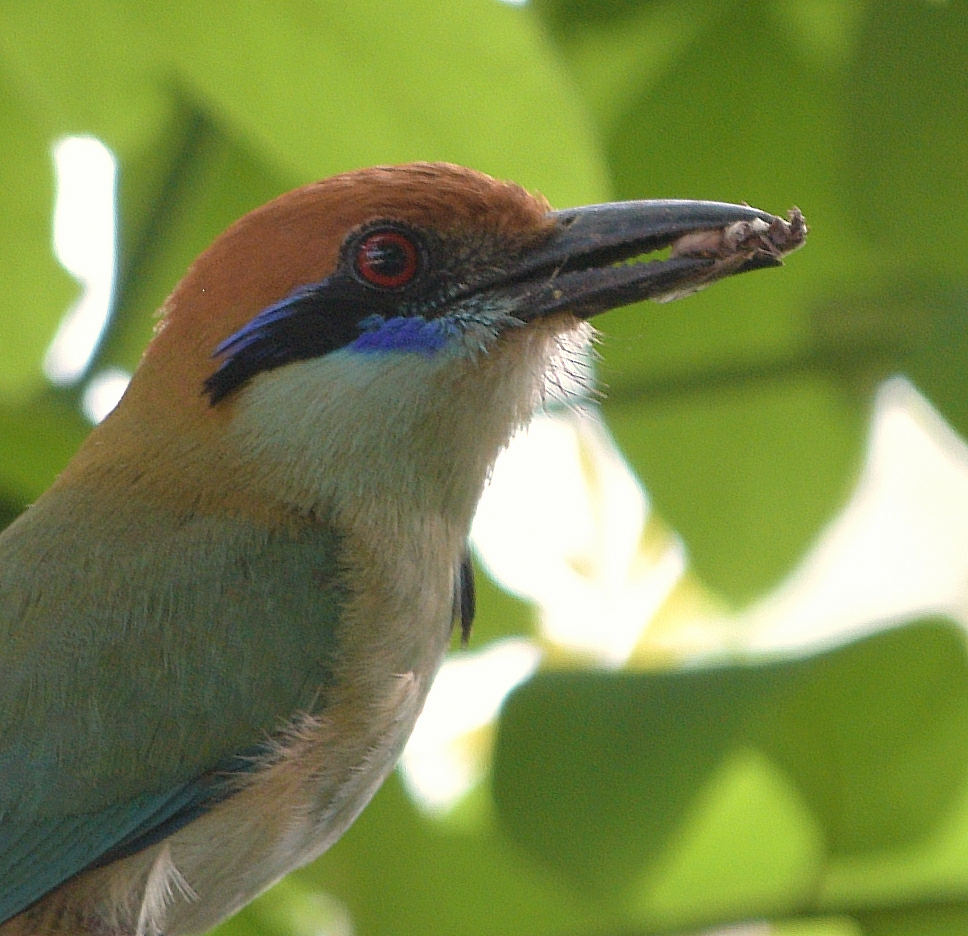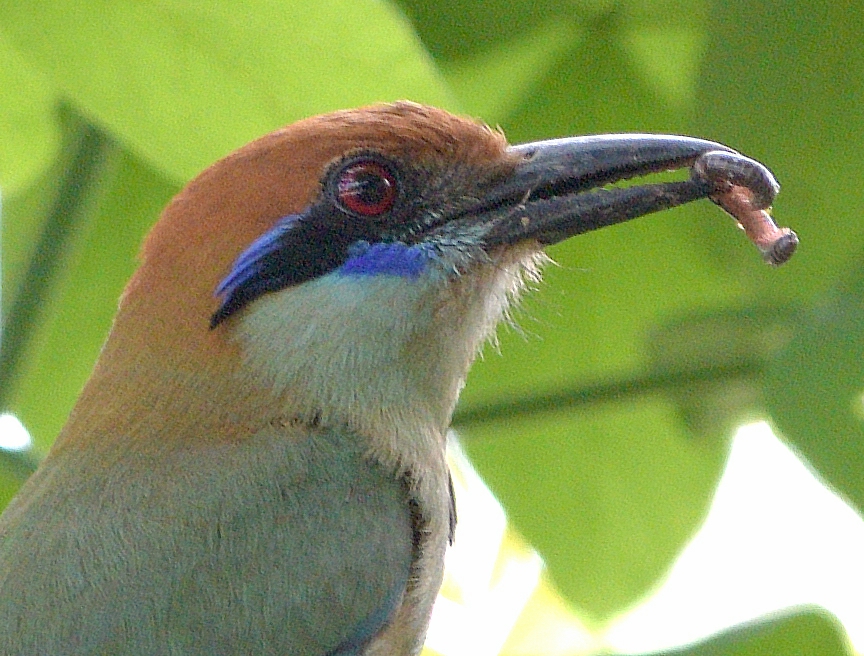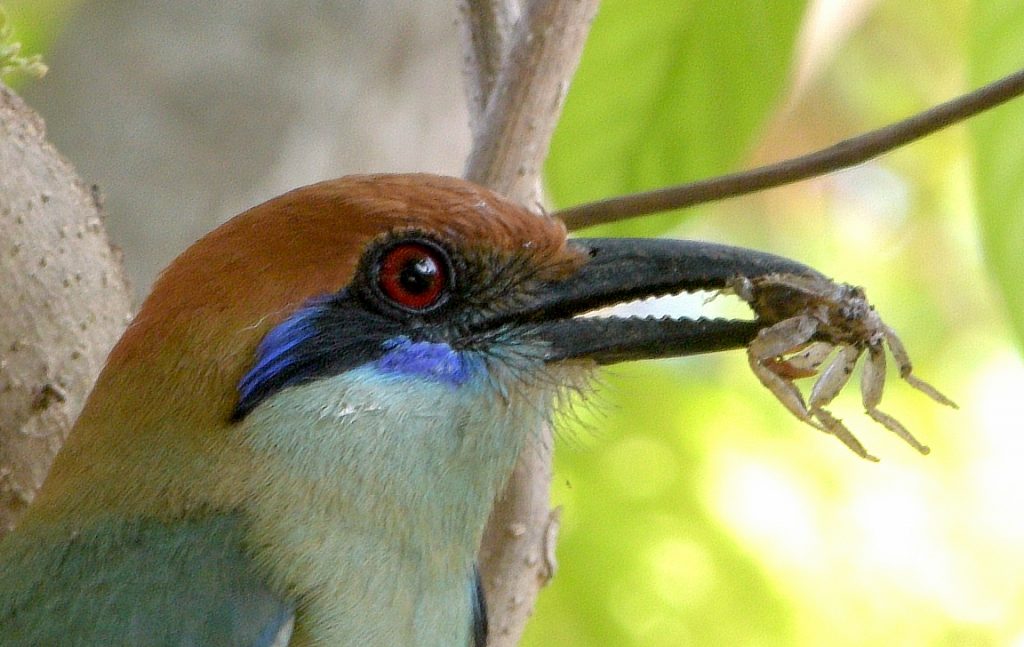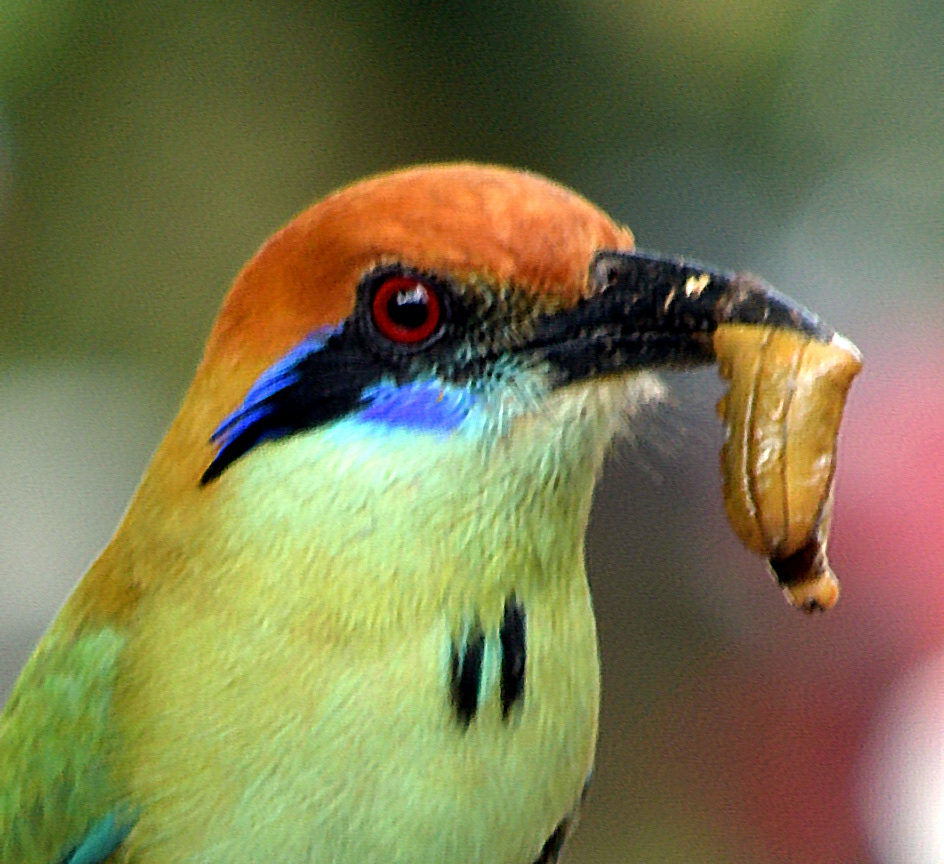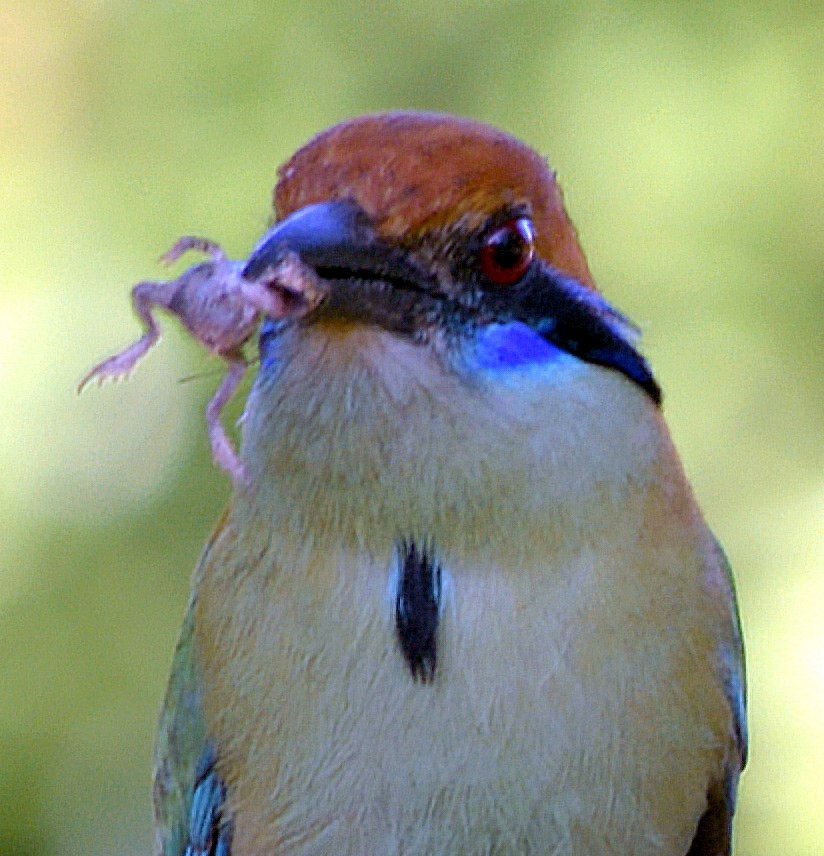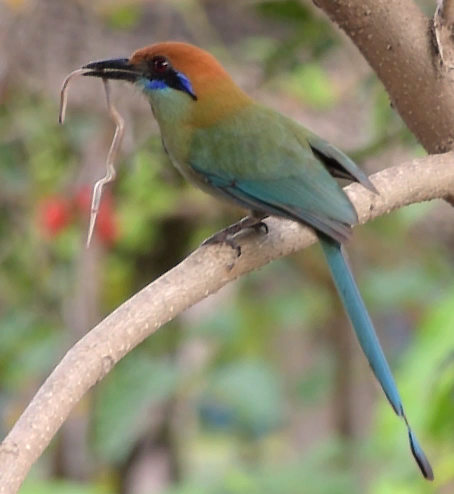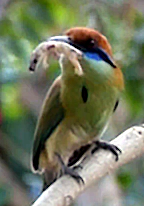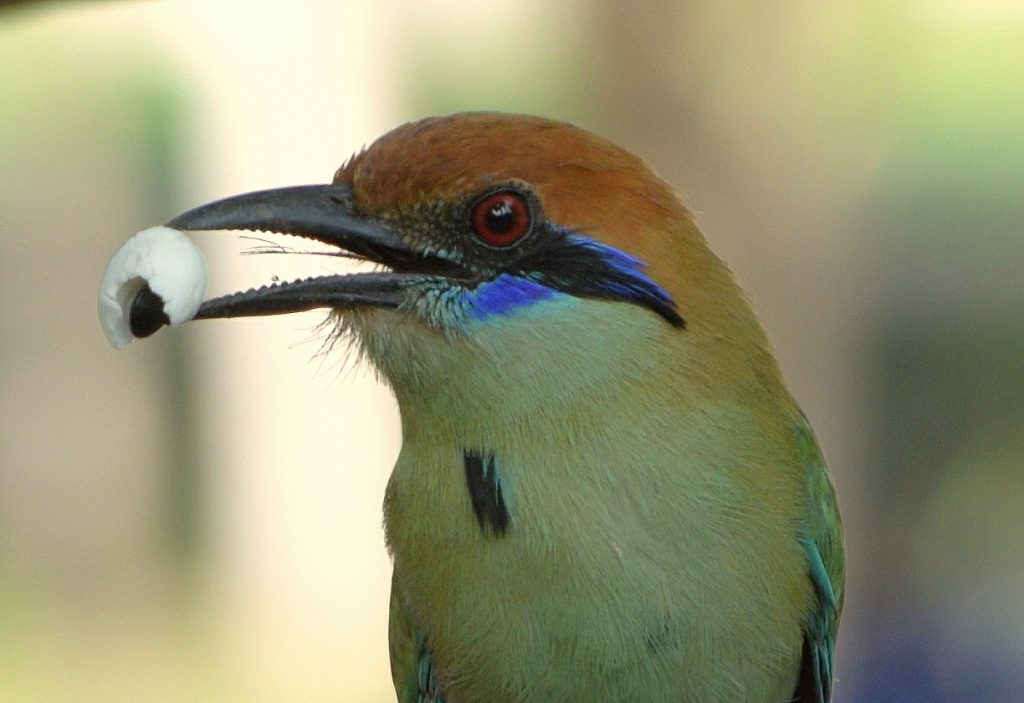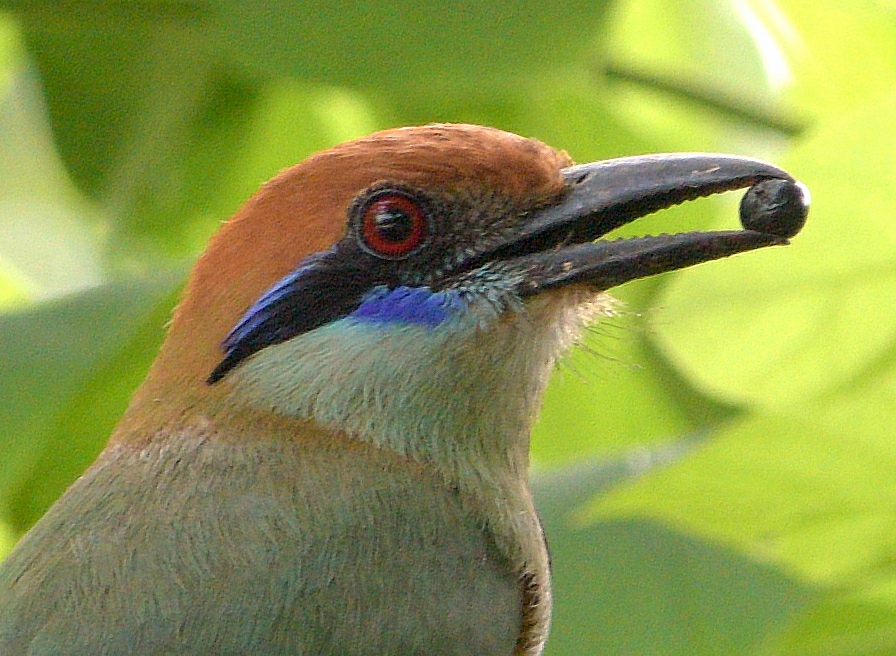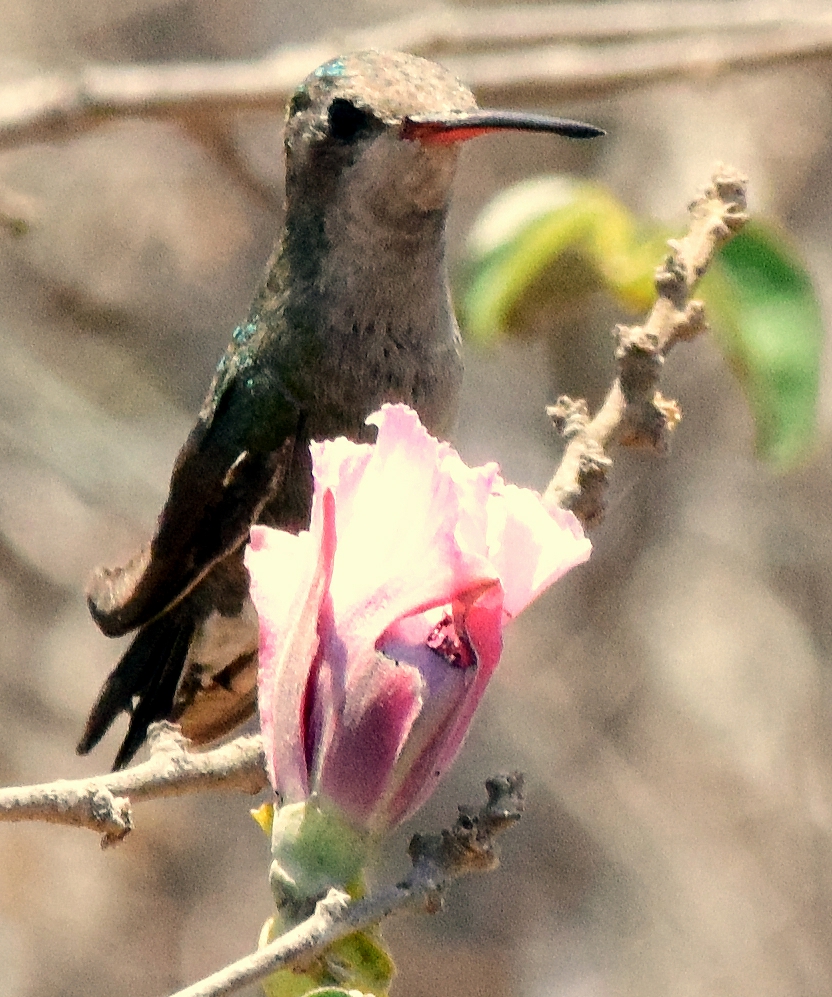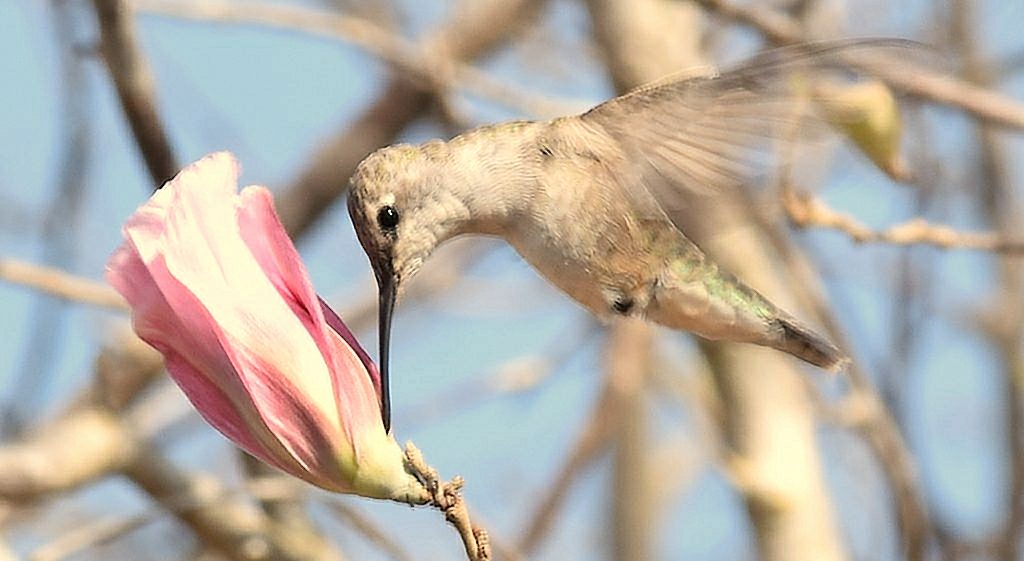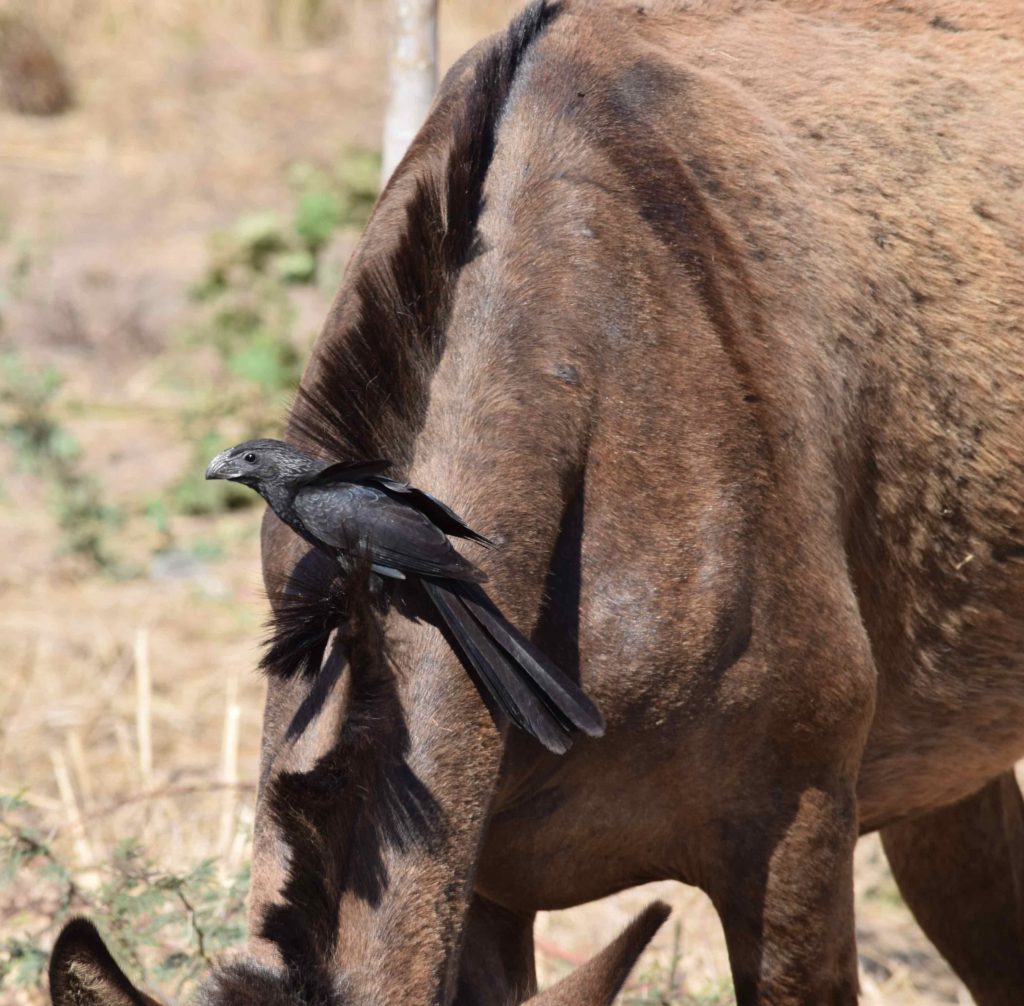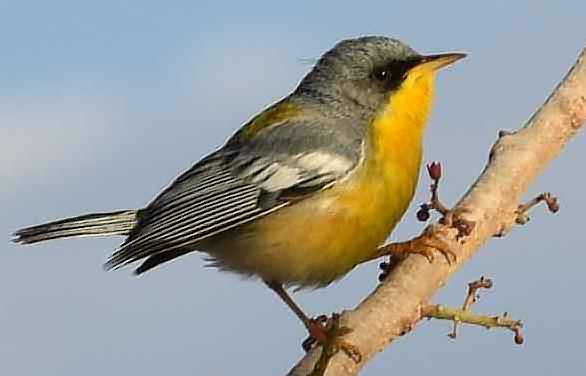In earlier posts I highlighted two instances of nectar-feeding by birds in western Mexico, that of Tropical Parulas (Setophaga pitiayumi) and Streak-backed Orioles (Icterus pustulatus) on Spondias purpurea and various species of hummingbirds taking nectar from wild cotton (Gossypium aridum).
Recently, I had the opportunity to observe additional bird species collecting nectar from the African Tuliptree (Spathodea campanulata), a common ornamental species in the region. The bird species collecting nectar from this tree included Orchard Orioles (Icterus spurius),
…Hooded Orioles (Icterus cucullatus),
…and Yellow-winged Caciques (Cassiculus melanicterus).
All of the above species are well-documented nectar collectors.1
The final bird I saw collecting nectar — the Rufous-backed Robin or Thrush (Turdus rufopalliatus) — was a considerably bigger surprise.
While many of the True Thrushes, including Rufous-backed Robins, consume significant amounts of fruit, I could only find one record of them consuming nectar. An unpublished source indicates that Asian species, the Grey-sided Thrush (Turdus feae), collects nectar from the flowers of the legume Acrocarpus fraxinifolius.2
So why would birds that eat sugar-rich fruit rarely if ever take the opportunity to collect similarly sugar-rich nectars? Apparently, the answer to this question lies in the kinds of sugars found in fruit and nectar.3
The sugars in fruit are almost always glucose and fructose. These sugars are simple and directly absorbed in the intestines of frugivores without need of further processing. Conversely, most floral nectars have sucrose as their predominant sugar. Sucrose is a disaccharide formed from glucose and fructose and cannot be absorbed by the intestines until it is broken down into glucose and fructose by the enzyme sucrase.
Rufous-backed Robins in specific1 and, True Thrushes in general3, lack measurable quantities of sucrase. Therefore, they can’t digest sucrose-rich solutions. Some bird species lacking sucrase may suffer something called osmotic diarrhea when fed sucrose-rich solutions. Not surprisingly, they tend to avoid consuming such solutions.
There are, however, some plants that produce floral nectars where glucose and fructose are the predominant sugars.3 Such plants are more common in the Old World than in the New. This may be the result of a more equitable sharing of the avian nectar-feeding niche in the Old World between passerine species that can and can’t digest sucrose. In the New World, sucrose-digesting hummingbirds dominate this niche possibly reducing the selection for plants that produce floral nectars rich in glucose and fructose rather than sucrose.
This then may explain why I was able to observe Rufous-backed Robins feeding on nectar. The tree they were collecting nectar from, the African Tuliptree, is one of those Old World species whose nectar contains glucose and fructose instead of sucrose.4
As always, one question answered leads to others. Is this a relatively new behavior for Rufous-backed Robins or have we managed not to see them collecting nectar from other native plant species whose nectars contain glucose and fructose instead of sucrose? Also, the calyces of the African Tuliptree produce large quantities of water which are necessary for floral development and which then spills over into the opening flowers. In the relatively xeric environment along this part of the west coast of Mexico, has this unusual feature played any role in the origin and maintenance of nectar feeding in this thrush?
References and Sources
1Martinez, del Rio, Carlos. (1990). Dietary, phylogenetic, and ecological correlates of intestinal sucrase and maltase activity in birds. Physiological Zoology 63(5): 987 – 1011.
2P. D. Round (in litt. 1998).
3Lotz, Chris N. and Jorge E. Schondube. (2006). Sugar preferences in nectar- and fruit-eating birds: behavioral patterns and physiological causes. Biotropica 38(1): 1 – 13.
4Rangaiah, K., S. Purnachandra Rao, and A. J. Solomon Raju. (2004). Bird-pollination and fruiting phenology in Spathodea campanulata Beauv. (Bignoniaceae). Beitrage Zur Biologie Der Pflanzen 73: 395 – 408.

